

Everything You Need To Know About Designing A Marina
The global boating enthusiast community is increasing at a breakneck speed, with the common interest shifting towards bigger and beamier vessels. Consequently, the demand for well-designed marinas that can easily accommodate so many boats has risen to an all-time high. However, designing and constructing a high-quality marina isn’t as easy as it sounds.
Whether you’re building a small-scale or a large marina, proper understanding of the key concepts involved and planning accordingly is imperative to the project’s success. If you’re reading this, you are probably searching for how to design a marina and looking for expert marina planning advice, ranging from basic to complex design and infrastructure.
If that’s the case, then your search ends here. This article explores deep into the science of professional marina design and construction, from key factors involved to materials, budget estimates, and much more. Without any further ado, let’s get started.
What Is A Marina & Why Is It Important?
Let’s start with the basics; what’s the deal with marinas? At its core, a marina is a sophisticated dockyard where yacht owners, boating enthusiasts and sailors park their inexpensive vessels. These boats or yachts are most commonly used as ferries, for ocean tourism, or for delivering goods via water routes.
Most people often compare it with harbours, considering how these spaces also host massive ships that load in goods at times. Nevertheless, marinas are mostly dealing with smaller boats and pleasure craft than large cargo ships, unlike harbours. Also, as per common boating industry trends, many people use these fancy dockyards as recreational spaces for plain vessel-watching (only if the marina has enough space to entertain such activities).
People who live nearby waterbodies such as riversides or islands, recognize the importance of marinas the most. It’s quite impractical to always commute from such areas to mainlands or towns for small errands via large ships, which is why the demand for boats and yachts is rising by the day. Did you know that in 2021, North America alone saw the number of first-time boat owners surpassing 400,000 in total? Simultaneously, the need for marinas is increasing as they’re perfect to dock these small vessels.
Key Dynamics That Influence the Designing of A Marina
So, are you looking forward to designing your first marina? Let’s understand this first: marina planning is highly dependent on a few important determinants.
Although the visual appeal is quite crucial for design and construction, a lot more than that goes into creating a practical layout. Ranging from the type of raw materials used to weather conditions, aligning your plans as per these dynamics helps create a safe and customer-preferred marina.
Area Available for Marina Design
First and foremost, the type of marina one must design should adhere to the space available for development. You should focus on creating ample space for proper arrangements of slips to make the most room for onboarding boat owners.
Apart from slips, the area available for development is also dependent on its location. For instance, ocean-based marinas are usually more spacious than small-sized lakeside marinas. But if you’re planning how to design a marina on small water bodies where mostly personally owned vessels visit, having enough room shouldn’t be an obstructing factor.
Total Allocated Budget & ROI
Real estate project quality is highly reliant on its allocated budget; the higher you spend, the fancier the output. Likewise, when it comes to designing a marina, working on a handsome budget can seriously enhance the final result. However, if you’re planning to build a dock in the busier parts of your country, best believe the costs may shoot higher than in off-beat, seasonal areas.
It’s always recommended to ensure whether you’d make hefty returns on your investment for smart marina planning; figure out whether the area has high customer demand. If the marina starts projecting massive revenue from berthing ships and boats throughout all seasons, you’re more likely to earn back your investments much faster.
Has managing your marina budget become a challenge? Automate the basic marina management tasks with Dockmaster, a high-rated marina management system .
Size & Category of Boats Used
Your target audience plays a major role in the design process, and here’s how:
As discussed earlier, space availability affects marina planning heavily and that’s because you need sufficient room to berth the vessels. Although hosting small-sized personal boats doesn’t need a lot of space, it’s not the case with bigger ships and yachts.
If you’re planning to berth large vessels and mega yachts, ensure to add the necessary infrastructure appendages (lifts, side-tie space, etc). Thoroughly analyzing what boat category your marina is capable of berthing is key to proper marina planning.
Customer & Staff Safety Attributes
Safety should always be a high priority, whether you’re building a pastry store or an Oceanside marina. These spaces are usually more prone to safety and security hazards, and the design must consider these points.
First, prepare the marina to respond to potential fire hazards occurring due to fuel or ignition malfunctions by adding fire alarms, smoke detectors, extinguishers, etc. Keep first aid kits and other necessary medical facilities at hand for any unprecedented emergency. Last but not least, install warning and exit route sign boards to easily navigate the people present in the marina to stay protected from hazardous situations.
Climatic/Weather Restrictions
Next on our marinas, the design factors list is the most impactful of all — weather conditions.
Before finalizing what type of dock to use, figure out the most frequent climatic situations and tidal cycles that the location goes through the year. If it’s most freezing or snow-laden, you may have to invest in different types of raw materials than you would for marinas in tropical atmospheres. For instance, polyethylene is more durable and damage-resistant in colder temperatures than regular wood.
Besides, always have a backup plan to protect your marina from sudden weather challenges — read more about preparing your marina for hurricane seasons here.
How Much Does Marina Design & Construction Cost?
Next, how much do marinas design cost, on average? Sadly, there isn’t an accurate estimate as the expenses mostly depend on customer demands varying from place to place.
For instance, building a marina in areas where the boating culture is widely appreciated, such as Florida, can cost you around USD 8 million. However, you can establish the same marina in New York, where boating isn’t as popular for less than USD 700,000.
Apart from the customer demand, the expenses also heavily rely on the quality of raw materials used for construction. If you’re using top-quality steel or wood, the budget will shoot up. Other imperative factors behind expenses include the total number of hired staff and their working hours.
To read 9 tips on effective marina management, click here . What Materials Do You Need To Build A Marina?
Selecting the right construction materials is imperative to marina planning, as these components sustain the dockyard throughout different weather conditions.
The material you’d require also depends on the construction site dynamics and your business goals behind marina development. Thus, ensure to choose low-maintenance, sustainable surface materials to build a strong marina that doesn’t demand an arm and a leg for periodic servicing.
Being the most commonly used marina construction material, choosing the right type of wood is pertinent for its long-term sustainability.
Here’s the biggest challenge: wood is prone to rotting quicker than its alternatives. In this case, opting for hardwoods can be an ideal choice; however, you’d need to clean and oil it periodically to prevent any damage caused by water intrusion.
On the other hand, choosing pressure-treated wooden surfaces enhances the aesthetic appeal of your marina’s design, but it also requires higher maintenance.
If you prioritize super low maintenance and longer sustainability over the visual appeal, using concrete for dock construction is your safest bet. Besides, newly introduced additives and advanced treatments make it even more sustainable in rigorous weather, disproving the age-old myth that concrete is highly ineffective in freezing climates. Dock manufacturers mostly apply concrete to build heavy-duty breakwaters, tiles, and pools on the property.
This goes without saying, aluminum is possibly the lowest-maintenance material on this list. Highly resistant to rotting and corrosion, it takes only a little vinegar or baking soda formula to maintain aluminum components in your marina.
However, aluminum oxidizes very quickly, which adversely affects its appearance.
Using steel is pertinent to marinas design and it is mostly used to construct the supporting components for docks and piles. Both galvanized and stainless steel is highly durable and rot-resistant.
However, you may witness minor corrosion from time to time, which again hides easily under a paint coating.
Plastic, especially polyethylene, isn’t affected by water intrusion and does not require any maintenance at all.
Marina designers mainly use plastic for benches, floating docks, gangways, etc. Unlike wood, plastic doesn’t splinter or need sharp nails, which makes it a safer base for people to commute barefoot.
Popular Marina Design Trends to Follow
Now that we’ve discussed how to design a marina, let’s take this learning further and enlist some design trends that enhance your marina’s value. Customer preferences have evolved with time, transcending marinas from boat berthing spots to pastime destinations.
That said, these futuristic design ideas will help your marina business last for years to come:
Going Green For Marina Construction
Marinas, in general, are quite notorious for being not so environmentally friendly. As per the United States Environmental Protection Agency , these luxurious dockyards often contribute to high toxicity levels in the water, boost pollutant concentrations among water-based organisms, and skyrocket erosion levels.
However, “going green” or incorporating eco-friendly components while designing can help your marina stand out from the rest. For instance, refraining from wood and using polyethylene instead prevents polluting the aquatic environment, as wood tends to stain more.
Revamping the Usual Material, Colors & Styles
Marinas that are more visually appealing are more preferred by customers, compared to old stereotypically-designed docks. Recent boating industry trends include building customized marinas with different themes, styles, and colour schemes to attract more customers.
Adding More Fun Shoreline Attractions
Marina customers have changed over time; not everybody prefers spending all their time boating. In many cases, the boat owners sail down to the marinas to relax and spend some quality time on the spot itself.
You can make the most of this trend by adding a list of fun-filled shoreline amenities. For instance, keeping fast food takeaways, dine-in restaurants, or swimming pools as a key part of your marina planning helps keep your customers happy. You can also build more inviting spaces for enthusiasts to gather, communicate and stay engaged. Besides, it also adds extra revenue to support any periodic maintenance or other critical expenses.
Advanced Wave Protection Attributes
Massive waves usually rise by hurricanes, mega yachts, or cargo ships, which adversely impact the marina property. To prevent your property and the berthed small boats from any sort of damage, it’s imperative to install larger breakwaters or floatable attenuators in the marina. Apart from storm safety, larger attenuators increase dock space as an added advantage.
Your Marina Is Set Up: What About Maintenance?
Proper maintenance is crucial for the long-term success and sustainability of a marina. Implementing a proactive maintenance plan helps ensure the safety, functionality, and appearance of the marina. Here are some important tips for maintaining a marina:
Regular Inspections: Conduct routine inspections of all marina components, including docks, pilings, gangways, and electrical systems. Inspect for signs of wear and tear, corrosion, loose or damaged fasteners, and any potential hazards. Promptly address any issues detected during inspections to prevent further damage.
Cleaning and Debris Removal: Regularly clean the marina to remove debris, leaves, trash, and other waste that can accumulate around the docks and shorelines. This helps maintain a clean and inviting environment for boat owners and visitors while preventing potential blockages in drainage systems.
Piling Maintenance: Inspect and maintain the integrity of pilings, which provide support for the docks. Check for signs of degradation, such as rot, marine growth, or damage caused by pests. Implement measures to protect pilings from marine borers and other pests, such as using protective coatings or wraps.
Electrical System Maintenance: Regularly inspect and maintain the marina’s electrical infrastructure, including power pedestals, wiring, and safety systems. Check for signs of corrosion, loose connections, or damaged electrical components. Ensure that electrical systems are up to code and regularly tested for safety.
Dock and Gangway Maintenance: Inspect docks and gangways for structural integrity, rot, decay, or any other damage. Replace any worn-out or damaged components promptly to avoid safety hazards. Clean and treat wooden surfaces regularly to prevent slipperiness and maintain their appearance.
Water Quality Management: Monitor and manage water quality in and around the marina. Implement practices to prevent pollution, such as proper waste disposal, fuel spill containment, and regular water testing. Install appropriate filtration systems to maintain good water quality and prevent the growth of harmful organisms.
Facility Maintenance: Maintain marina facilities and amenities, including bathrooms, showers, fueling stations, and waste disposal services. Regularly clean and inspect these facilities to ensure they are in good working condition and meet hygiene standards.
Emergency Preparedness: Develop and regularly review an emergency response plan to handle unforeseen events, such as severe weather conditions or accidents. Clearly mark emergency exits, install appropriate signage, and provide training to staff on emergency procedures.
Communication and Customer Service: Foster open communication with marina users, boat owners, and staff to identify and address maintenance concerns promptly. Respond to customer feedback and take necessary actions to maintain high levels of customer satisfaction. Regularly communicate maintenance schedules, updates, and any potential disruptions to marina operations to keep boat owners informed.
By following these maintenance tips, marina managers can ensure the longevity, safety, and overall success of their marina. Implementing a proactive maintenance approach reduces the need for major repairs and enhances the overall experience for boat owners and visitors.
*Note: DockMaster’s marine management software includes features that facilitate maintenance tracking, work orders, and preventive maintenance scheduling, enabling marina managers to streamline their maintenance processes and ensure efficient operations.
Wrapping Up
Here’s the biggest secret about how to design a marina th at stays in business profitably: put your customers and staff first throughout the journey. In a nutshell, marinas that rank high in safety and offer attractive features to engage the customers will always outlast their competition. Busy with extensive design planning? Leave the daily marina operations to DockMaster, an industry-leading marine maintenance software trusted by marina owners for 38 years; request a free demo today.
DockMaster Marketing
Previous post exploring the hidden gems: unique marinas around the world, next post winter is coming: preparing your boat for the off-season at the marina , leave a reply cancel reply.
Save my name, email, and website in this browser for the next time I comment.
- Marina Management
- Marine Service Management
- Dealer Management Software
- Financial Management
- Marine parts and inventory management
- Powerful integrations
- DockMaster Flow
- DockWorks App
- Point of Sale
- For Small Businesses
- For Enterprise Businesses
TAKE ADVANTAGE OF OUR NEW YEAR REBATE
- United States
- International

Design Guide for Marinas
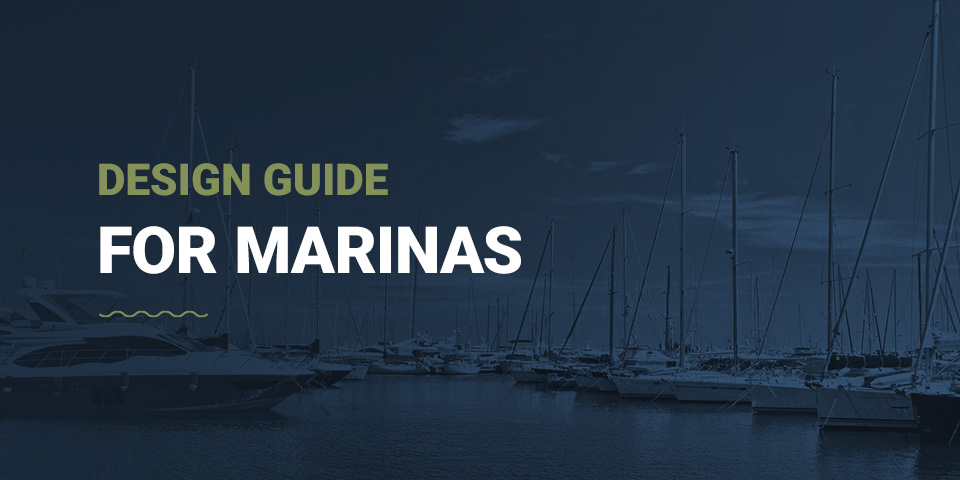
You don’t need to follow a step-by-step outline to create your perfect marina. Instead, use tips to ensure that you have the necessities. After you have the basics in place, look to marina design trends to create a modern marina that will be practical and attractive.
To get started on your marina design, understand the factors that will influence the final look of your marina, know the best materials to use and find trends to match the style of your marina users.
Read the full article or jump to a specific section:
- How to Design a Marina
- Choosing the Right Material
Marina Design Trends for the Future
Start your marina design with dock options from ez dock, how to design a marina — factors that affect marina design.
When designing your marina, you must consider more than aesthetics when choosing components and the overall layout. These factors impact everything from the number of berths you make available to the type of dock material you choose. Examine these factors when creating the plan for your marina to ensure project feasibility and its ability to provide a safe, useful site for boaters.
1. Marina Users Expectations
What type of people will use your marina, and what will they expect to find? If you create a marina for local resorts to provide their guests with personal watercraft or yachts, you may not need as much space as you would for a marina in a seaside community of boating enthusiasts, each with their own yacht.
The users and their expectations will also help you decide whether to create a utilitarian marina to serve basic needs or a luxury destination where people can get on the water on their boats and enjoy recreation along the water. These upscale marinas may include restaurants, high-end design and places to gather and socialize.
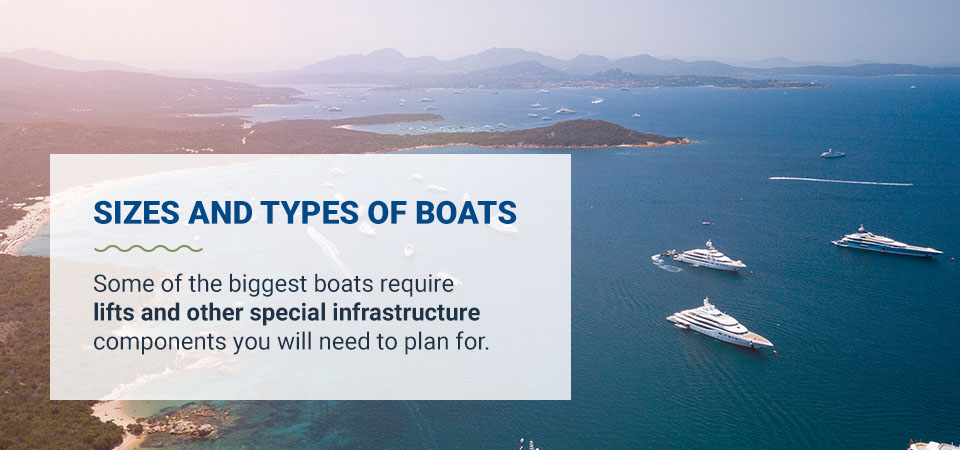
2. Sizes and Types of Boats Used at the Marina
What types of boats will dock at your marina? Large yachts require more space and larger slips. Some of the biggest boats require lifts and other special infrastructure components you will need to plan for.
Megayachts may require side-tie space to accommodate these vessels. Catamarans are increasingly popular in some parts of the country and often don’t fit within common slips. These wider vessels often require more space than other sailboats and wider slips.
Some marinas, especially those situated in inland, freshwater locations, may have a greater demand for a higher number of smaller slips. Take stock of the demand in your area before choosing the sizes of slips you will need. Knowing what your marina can handle will ensure your success in attracting boaters to dock at your site.
3. Regulatory Requirements
Depending on where you will build, you may be under regulations to control the size and number of slips that your marina can have. These regulations may prohibit you from building a marina with as many spaces for large vessels as you want.
One way some marina owners have balanced local requirements for public access and the need for fewer, larger slips has been to extend docks and narrow them to create wider berths. These extra-wide berths can accommodate the larger yachts that need docking space in many marinas. Always find out if there is a need to dock large boats before making design choices for your marina.
Determining demand is especially vital if you need to fit larger slips into your marina while meeting regulatory requirements. Without a local demand, you do not need to change your design beyond those required by local agencies.
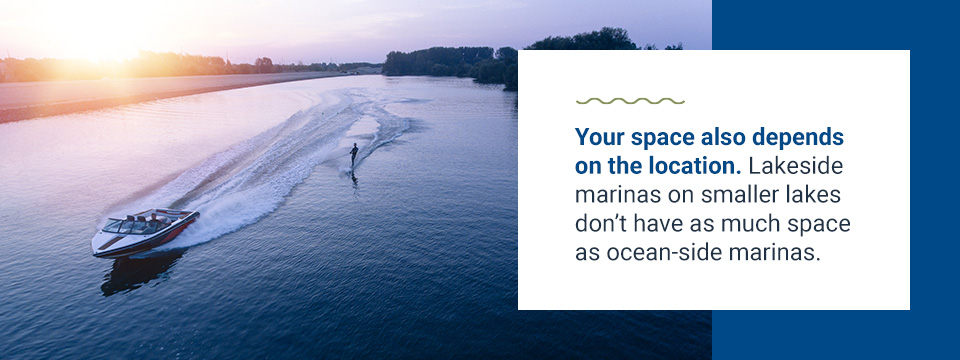
4. Space Available
How much space you have available is important, especially if regulations mandate a minimum number of slips in your space. The amount of room you have will help you determine the number and arrangement of slips. You will have to decide what to do with the space available on the shore.
Your space also depends on the location. Lakeside marinas on smaller lakes don’t have as much space as ocean-side marinas. Nor do the former require as much room since the boats used on smaller bodies of water tend to be smaller or personal watercraft.
Such a space on a lake may need kayak storage space and a launch at the marina. These non-powered boats appeal largely to those getting into water sports and tourists visiting lakes or other natural areas. If your marina will serve a lakeside spot, reserving space and launch points for kayaks or paddleboards will help you make the most of your limited space.
If you have ample shore space, consider installing additional amenities that have become more popular lately. You may want to include rooms for owners or captains, swimming pools or gyms. These options allow people at your marina to have a more rounded experience. Adding a swimming pool also prevents people from using the marina waters when they want a dip, keeping your facility safer.
Your budget will dictate the the project’s direction and how much you can afford to construct. Marina construction, like any other real estate building, depends greatly on your location. Sites that may see use most of the year, such as in southern Florida, have a high demand, and the cost for construction and land may be higher than seasonal marinas on lakes in other parts of the country.
Find out about local costs of construction for a marina to determine the size of a site you can afford. Projecting potential income from berthing vessels and other sources can help you determine your ability to earn back your investment in the marina. If your marina meets a high demand, you will likely have more income and get a faster return than a site that will not see as much income from berths and users.
Don’t forget to incorporate operating costs when estimating final profits and your return on investment. High maintenance components in your marina, such as wooden docks, may cost less initially but require more maintenance and higher costs over time.
6. Weather Considerations
What type of weather will your marina experience throughout the year? If you have snowy or icy conditions, choose materials and equipment that you can remove from the water during the offseason or prepare for the winter. Floating docks are a removable option that you can pull off the water in the off-season. Polyethylene also stands up well against freezing weather that might damage wood for structures you cannot remove.
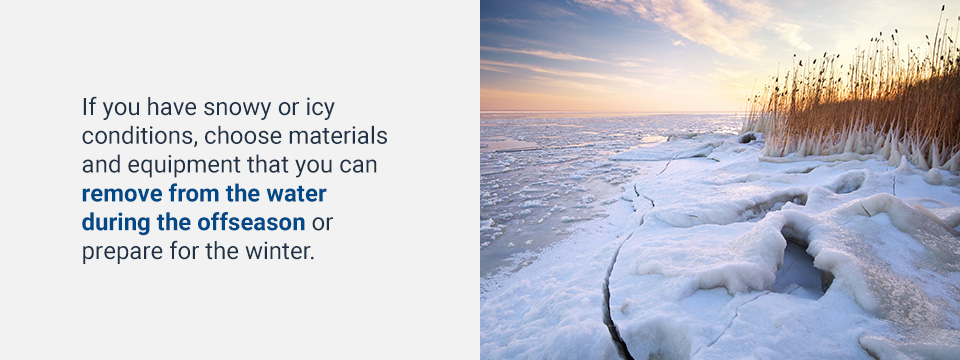
Additionally, you must have plans for protecting your marina from hurricanes or other storms. Preserving the vessels inside the marina from storm damage throughout the hurricane and thunderstorm seasons may require installing large breakwaters and floating attenuators. These may prevent serious property loss from heavy waves during storms or at other times.
7. Safety Features
Safety features should always be part of your marina plan. You must have proper lighting to prevent tripping and security hazards. Lights and signs should also indicate exit routes in cases of emergencies requiring evacuation.
Fuel, engines and other ignition sources present a serious fire hazard. Your marina must have fire suppression systems that include fire extinguishers, alarms and smoke detectors. Check with your local fire authority for the specific number and location of these items based on the size and arrangement of your marina.
First aid kits and AED units are medical features to include around the marina. Post signs to indicate the locations of these devices to ensure even visitors can find them quickly.
8. Shoreside Amenities
Will you install shoreside amenities at your marina? What types will you include? Bathrooms, showers and offices are standard options. However, you may want to include other types of features to draw users to your marina.
Even smaller marinas can incorporate restaurants or clubhouses. Larger facilities might have space for resorts, gyms, spas or homes. The choices of these amenities depend on the space you have, who your marina will serve and where you are located. You will likely get more profit from these amenities if you have a marina that can operate most of the year instead of sites with shorter seasons.
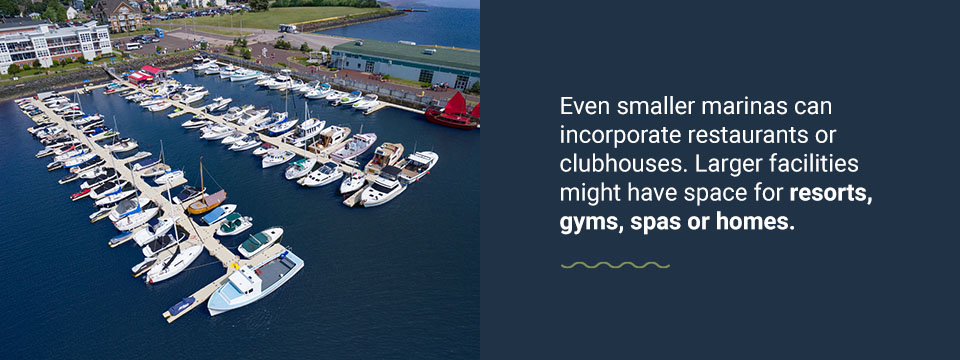
Choosing the Right Material — What You Need for a Marina
Materials used in a marina should stand up to wind, sun, rain, snow and ice. Some surface materials will require more regular maintenance to preserve their integrity and appearance. To reduce overall time spent keeping the marina looking good over the years, consider low-maintenance, durable materials for docks and other surfaces. As with all marina decisions, the type of material you choose will be specific to your site and the aims you have for your marina.
Wood is a traditional material for marina components. When you have docks built from wood, you must choose a type of wood that will stand up to the elements. Hardwoods, such as ipe, are dense and can resist rot better than other types of wood. However, even these woods require regular cleaning and oiling to protect the surface from water intrusion.
Another material to use is pressure-treated wood. This wood type needs cleaning, sanding and staining to restore its color and protect it from water damage. Using any type of wood for docks or other structures at a marina is a naturally beautiful option. But, it is a high-maintenance one. Factor in the cost of maintenance if you choose any wood components for your marina.
2. Aluminum
Aluminum is lightweight, rot-resistant and corrosion-resistant. It works well for portable features such as ladders. Cleaning aluminum requires little more than baking soda or vinegar for environmentally friendly stain removal. The downside to aluminum is its ability to oxidize when exposed to the elements. This oxidation does not damage the surface of the metal. However, it negatively impacts the metal’s appearance.
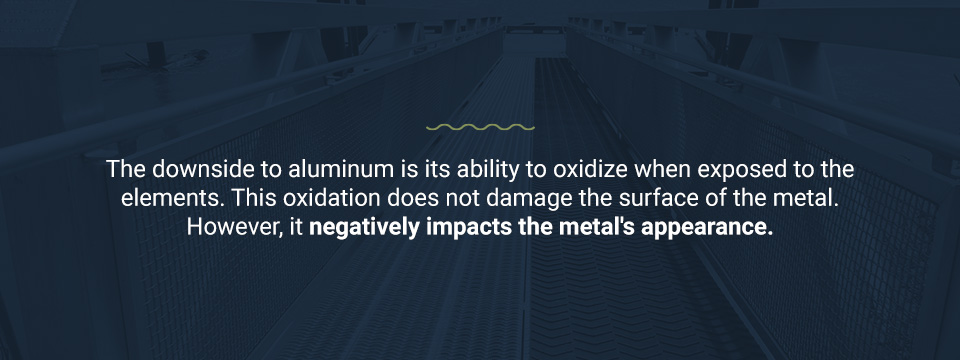
3. Concrete
Concrete for docks is another popular option because it lasts a long time and allows for customization. Some marina owners can use concrete and galvanized steel in docks to allow for the installation of swimming pools within the docks.
Other concrete uses around a marina include breakwaters, piles and concrete tiles. Concrete breakwaters can have heavy-duty designs that control larger wakes produced by bigger boats. Tiles made from concrete have places in decking and other structures. With modern concrete additives and treatments, this material can now stand up to the rigors of climates with very cold, snowy winters. In the past, this type of application for concrete would not have been feasible, which led to the myth of using concrete in only mild climates.
Plastics today are durable and almost maintenance-free. They are used for many components such as floating docks, benches, gangways and more. Polyethylene, a type of plastic used at marinas, does not rot or corrode. It also does not have organic components that would attract bugs to eat away at it. You never need to sand, paint or stain marina components made of polyethylene, making it a good option when you want long-lasting, low-maintenance components.
With modern designs, the surfaces of polyethylene components do not become hot underfoot. They also don’t use nails that can work loose. Plastics don’t splinter, either. Therefore, these surfaces are safer for those who use your docks, especially when walking barefoot.
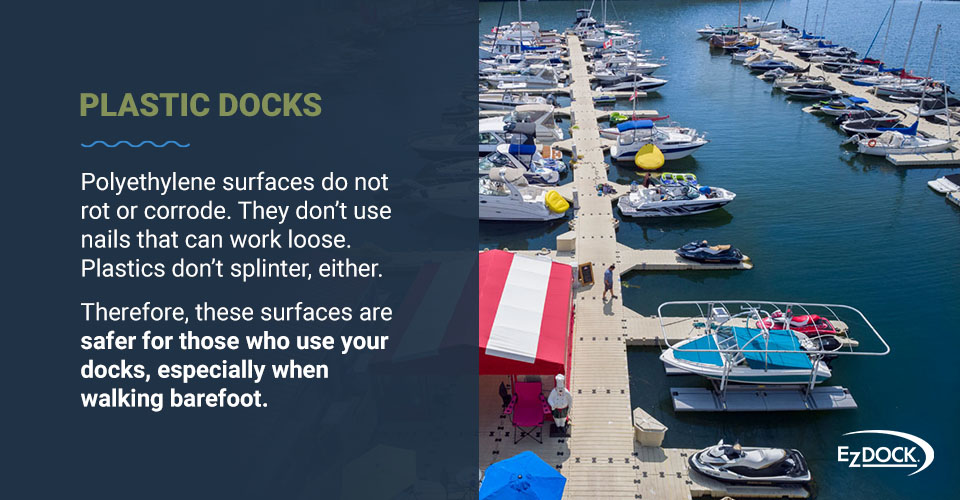
Stainless steel or galvanized steel provides strong, rot-resistant materials for marinas. This metal serves as the supporting part of structures such as piles or docks. When using stainless steel, the metal can show rust stains. Painting the metal hides these stains and prevents future corrosion.
Another option for steel piles is to use plastic coverings to protect them from the elements. These sleeves fit over piles giving your marina the benefit of steel strength without the appearance of rust on the outside of the piles. The sleeves let you customize the color of the piles to create a more visually impressive marina.
Marina design has style changes the same as any other design field. However, these design fads last longer than fashion trends and have more impact on who can use your marina and who wants to use it.
Many of the most recent changes in marinas reflect the evolving needs of the users. People want to have a destination at the marina instead of just a place to dock their boats. When creating a marina to last for years, consider this demographic and other future-thinking design trends.
1. Incorporating Shoreline Amenities and Attractions
Marina users today don’t spend all their time on the water. A growing trend with marinas is adding shoreside features to draw more people to the marinas, even if they don’t go out onto the water.
Amenities range from simple restaurants to more complex resorts. Some marinas have gyms or spas, while others include swimming pools on the shoreside. A benefit of these extra amenities comes from the added income they bring to help support the operation and boat slip maintenance.
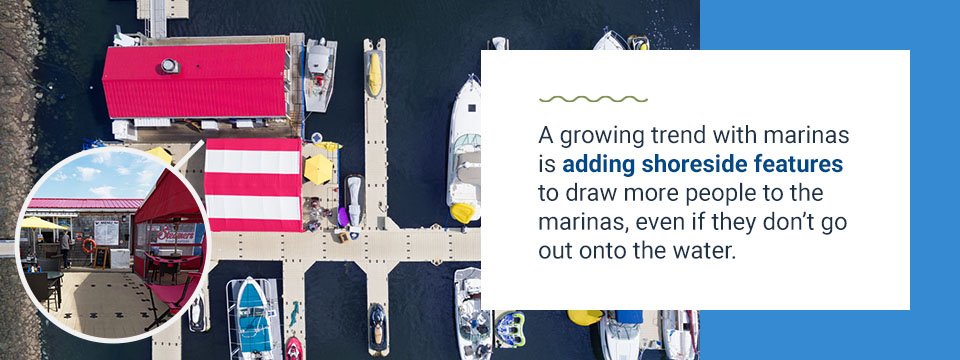
2. Creating Inviting Spaces
Marina users today want inviting spaces that are pleasant to be in and provide their boats safe harbor. A visually appealing space makes boat owners feel more comfortable at the marina. Invest in materials requiring less maintenance or conduct more frequent care of your surfaces.
Inviting spaces also include providing areas for each marina user to feel comfortable. Give them places to gather with other boating enthusiasts, such as a clubhouse for the marina. Your marina should also have a clear layout that makes it easy for owners to reach the berths for their vessels quickly.
Other ways to make the marina more inviting include incorporating high-speed Wi-Fi and adding in-slip pump-outs. LED lighting around the marina attracts fish and those who enjoy watching them in the water.
3. High-End Construction and Environmentally Friendly Materials
As people spend more money on their boats, they expect to store them in equally well-invested spaces. Therefore, your marina should reflect quality by using high-end construction processes and beautiful materials. Extra trim, added decorative features and lavish materials are commonly used in marinas and expected in high-end facilities. Incorporating these decorative elements enhances the aesthetic appeal of your marina and creates a more enjoyable place for marina users.
Marina users and local governments also have concerns about the environment. Choose materials that reduce the marina’s impact on the local ecosystem. For instance, choose polyethylene docks instead of wood because the former does not require staining. Some stains could wash into the water and harm the environment. More environmentally friendly options for building and maintenance show you are investing in preserving waterways and building your marina with the future in mind.
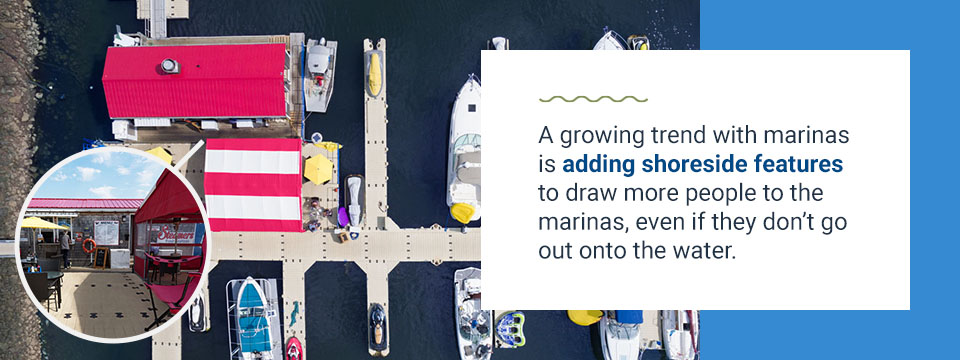
4. Customization of Materials, Styles and Colors
Older marinas did not often have colorful designs. Many marinas today opt for customized colors, styles and materials. Instead of standard concrete for decks, marinas today choose stamped or colored concrete for a more decorative touch.
Color-coding docks and using names to personalize individual docks creates a greater feeling of ownership for those who use the marina. Colorations make the space more inviting and encourage more investment from the users who appreciate the personalized touch.
5. Bigger Breakwaters and Attenuators
Stronger hurricanes and larger boats both increase the chances of wakes or waves impacting a marina. Future marinas will need bigger breakwaters or floating attenuators. Breakwaters need to be larger to meet the needs of marinas that face megayacht wakes and hurricane-produced waves. The extra size also needs additional durability to provide the strength to withstand higher waves.
Not every marina will be able to install fixed breakwaters. In the future, floating attenuators may become even more popular as natural harbors disappear in their availability, and local governments make obtaining permits for fixed breakwaters difficult.
6. Alternatives to Hardwoods for Decking
Marina owners are embracing alternative materials for decking to hardwoods. Despite the relatively lower cost of wood for decks, they require extra care and maintenance and don’t last as long as other materials. Wood decking needs frequent sanding and oiling or staining to keep it looking good. Pressure washing these decks is not possible as the pressure can create splinters.
Alternatives requiring less effort, such as polyethylene and concrete, are more popular today. These options don’t need painting and can allow deeper cleaning with pressure washing.
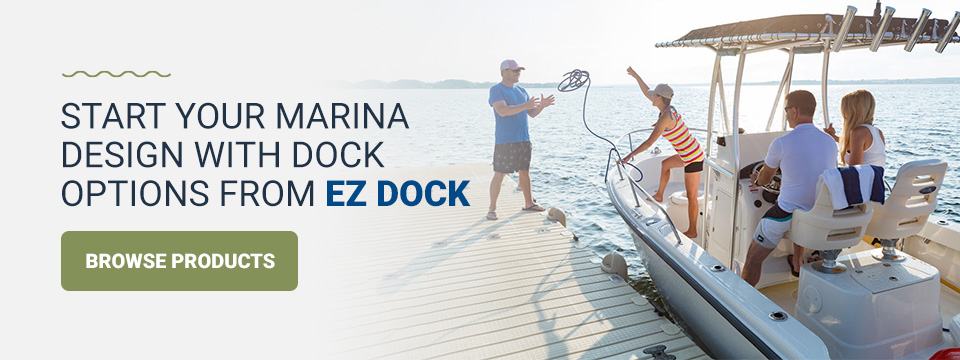
Your marina should start with sturdy, long-lasting dock options. With EZ Dock, you have choices for polyethylene docks that serve as maintenance-free alternatives to wood docks. These docks have low care requirements because they don’t rust, splinter or rot. Plus, they are non-slip and feel good under bare feet, even during the summer heat.
Our modular docks are simple to customize to your planned marina’s needs. Request a quote for one of our docks from EZ Dock. Or contact us if you’d like to work with a team member to customize your project based on your timeline, budget and other parameters. Start your marina design with premium docks from EZ Dock.
Related Posts
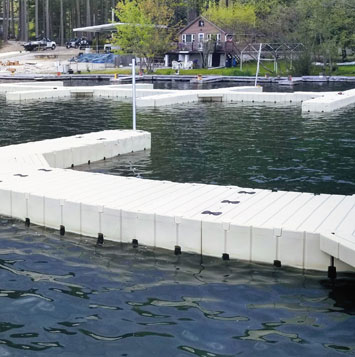
What Are the Parts of a Dock Called?
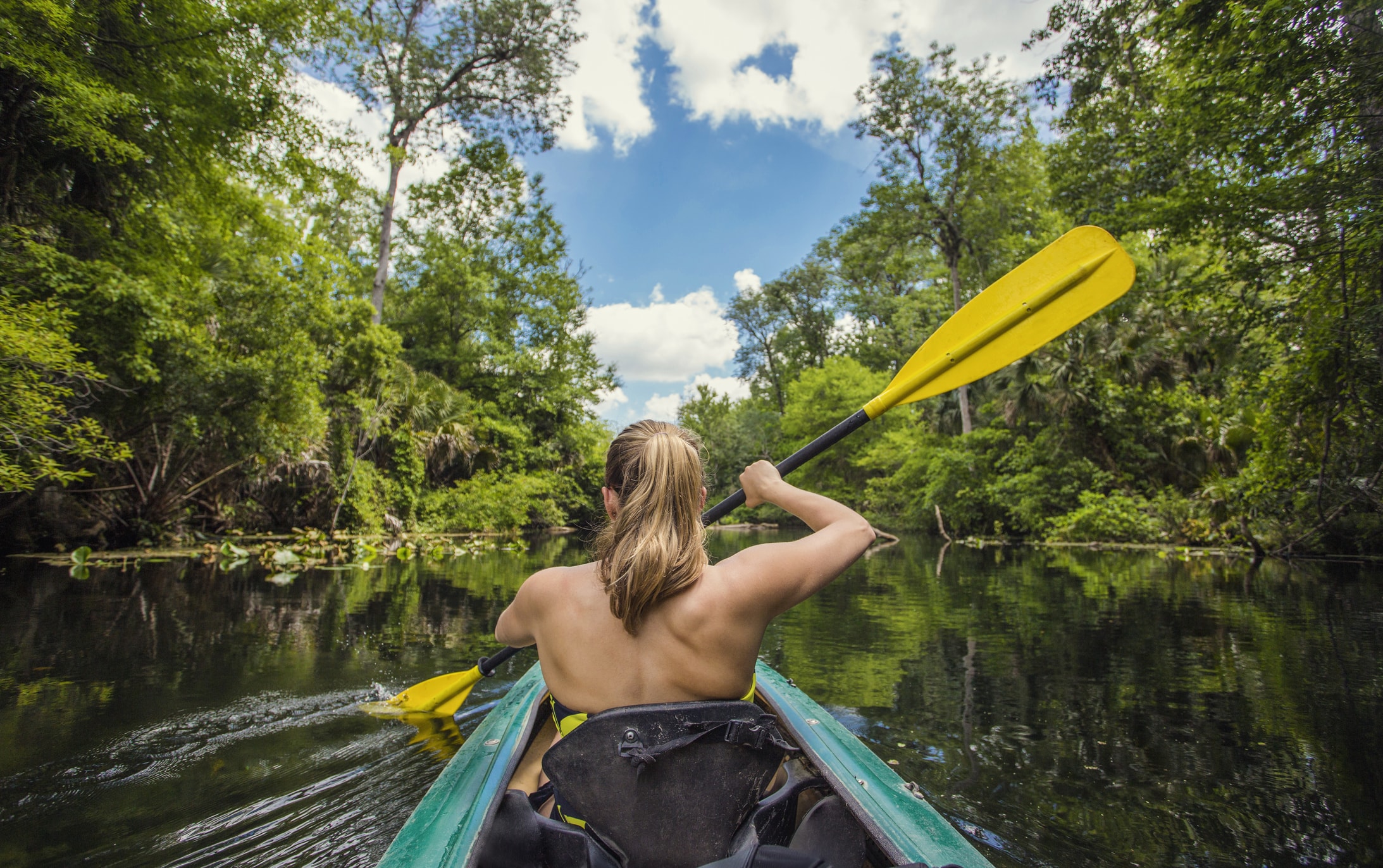
What to Bring Kayaking: Your Ultimate Trip Checklist
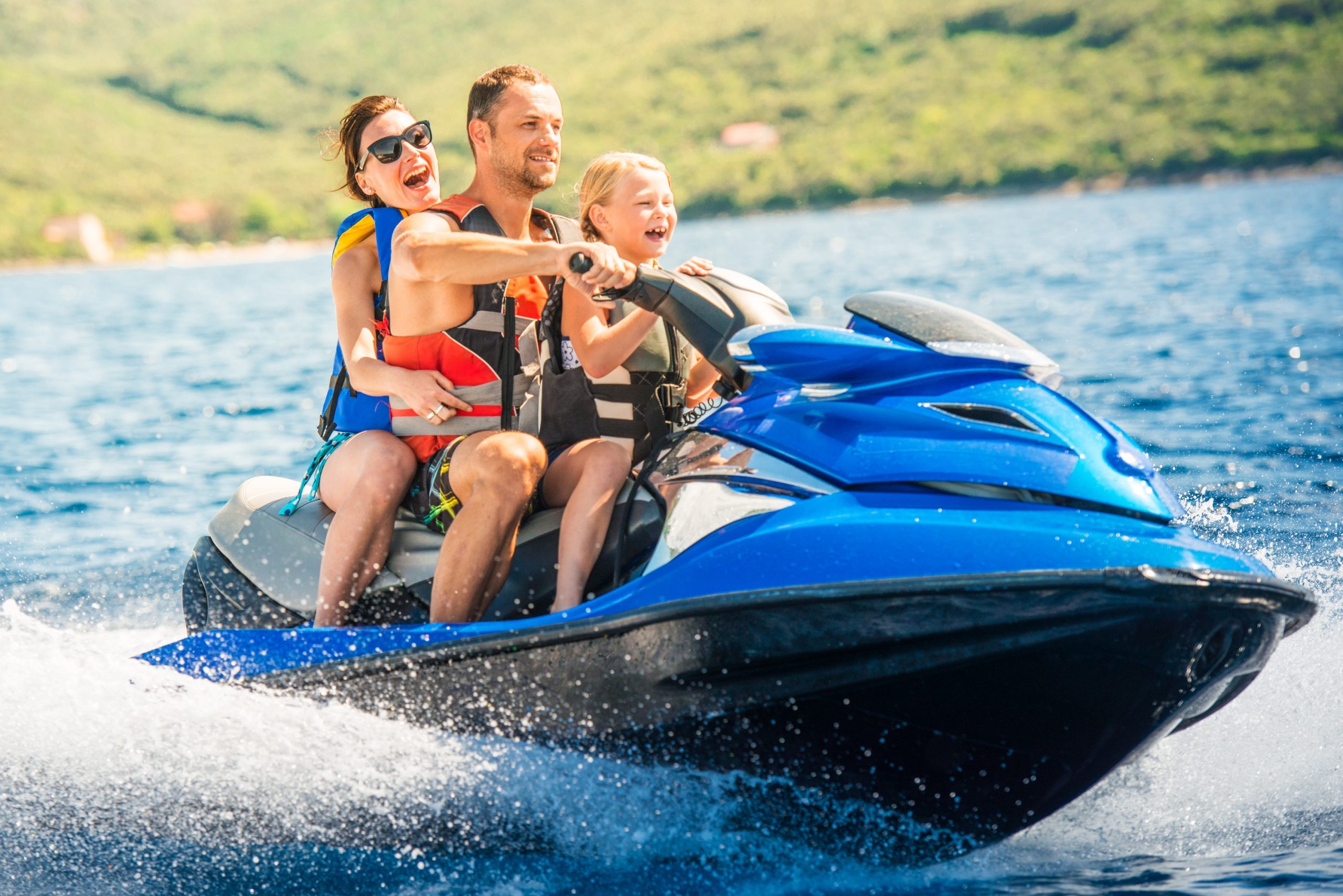
7 Things You Should Know About Riding PWCs
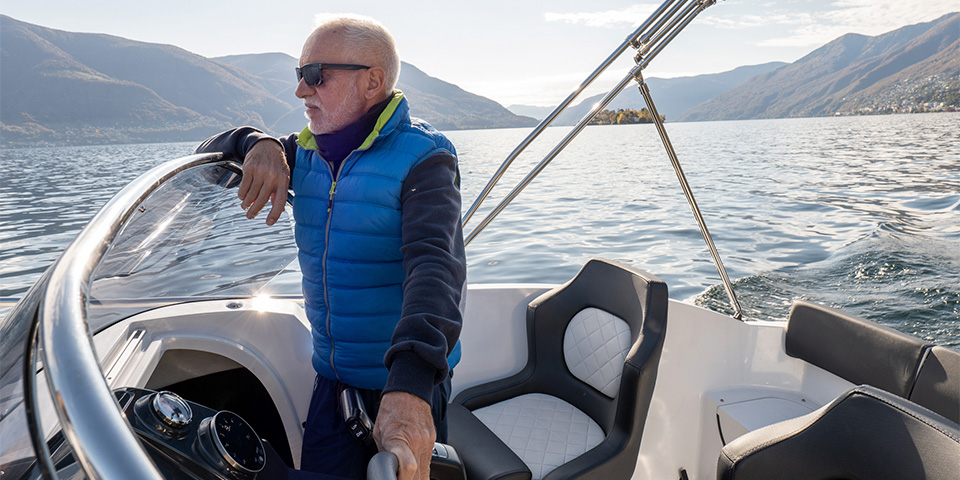
Guide to Boating in the Winter
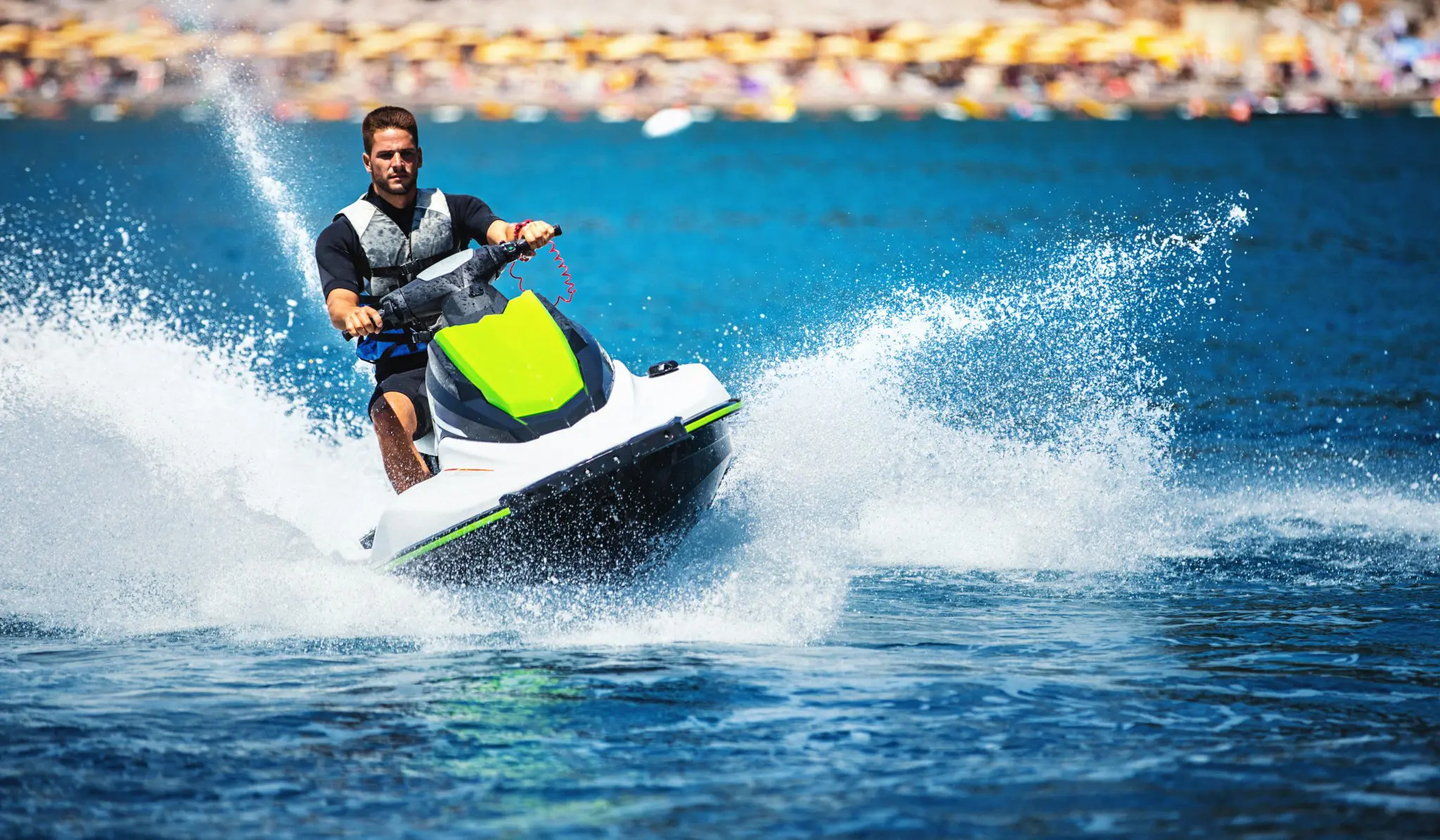

Guide to Maintaining Your PWC
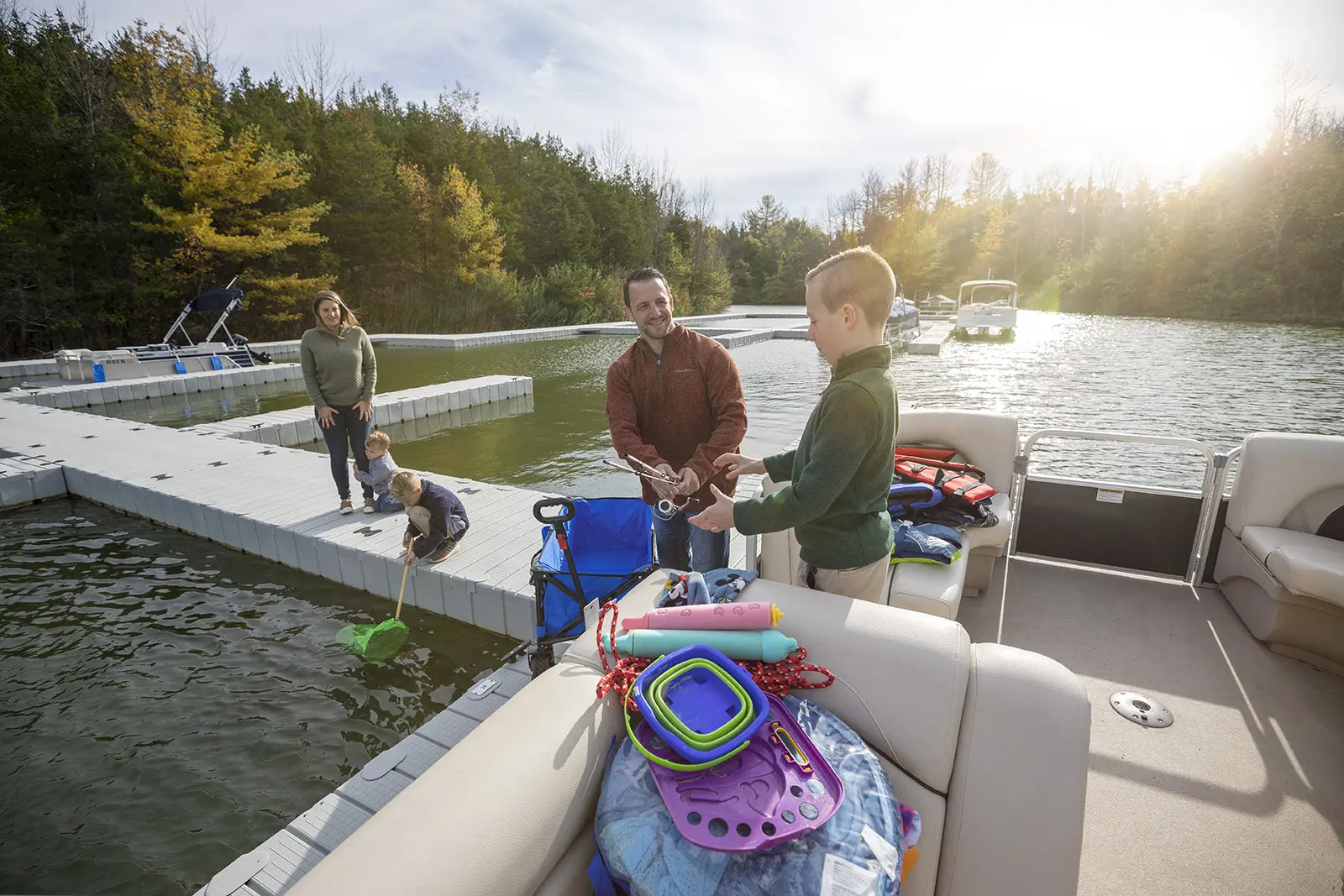
5 Activities for the Whole Family on Your Boat
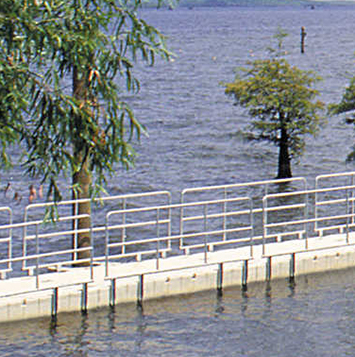
5 Dock Furniture Ideas
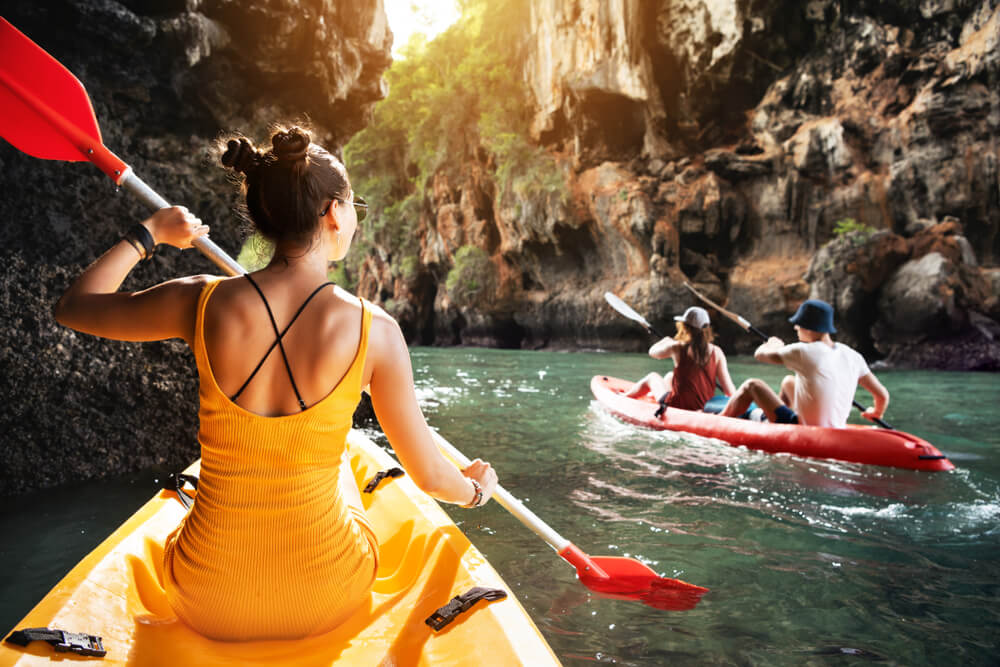
21 Top Water Sports for the Best Workout
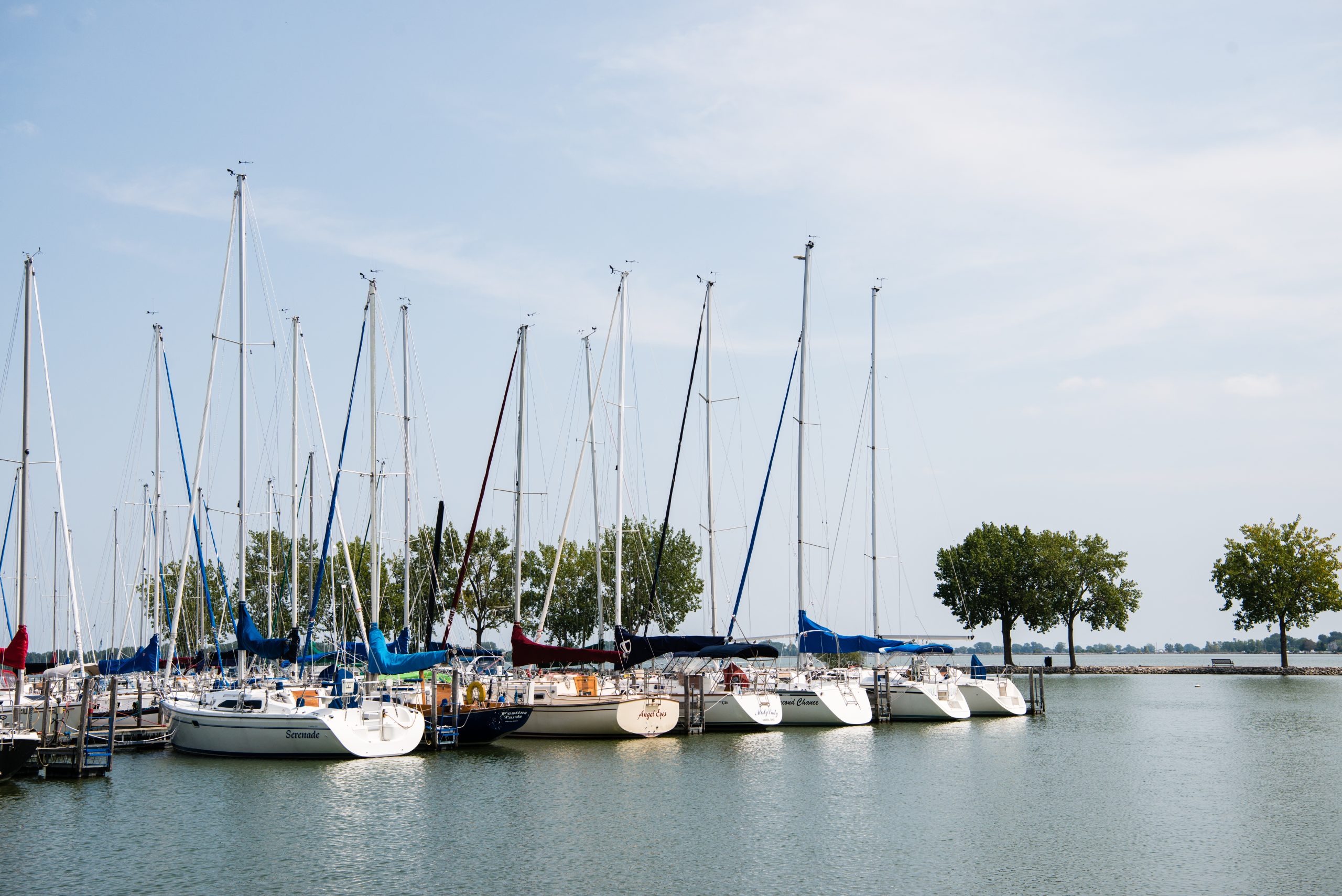
4 Tips for Throwing a Boat-Themed Birthday Party
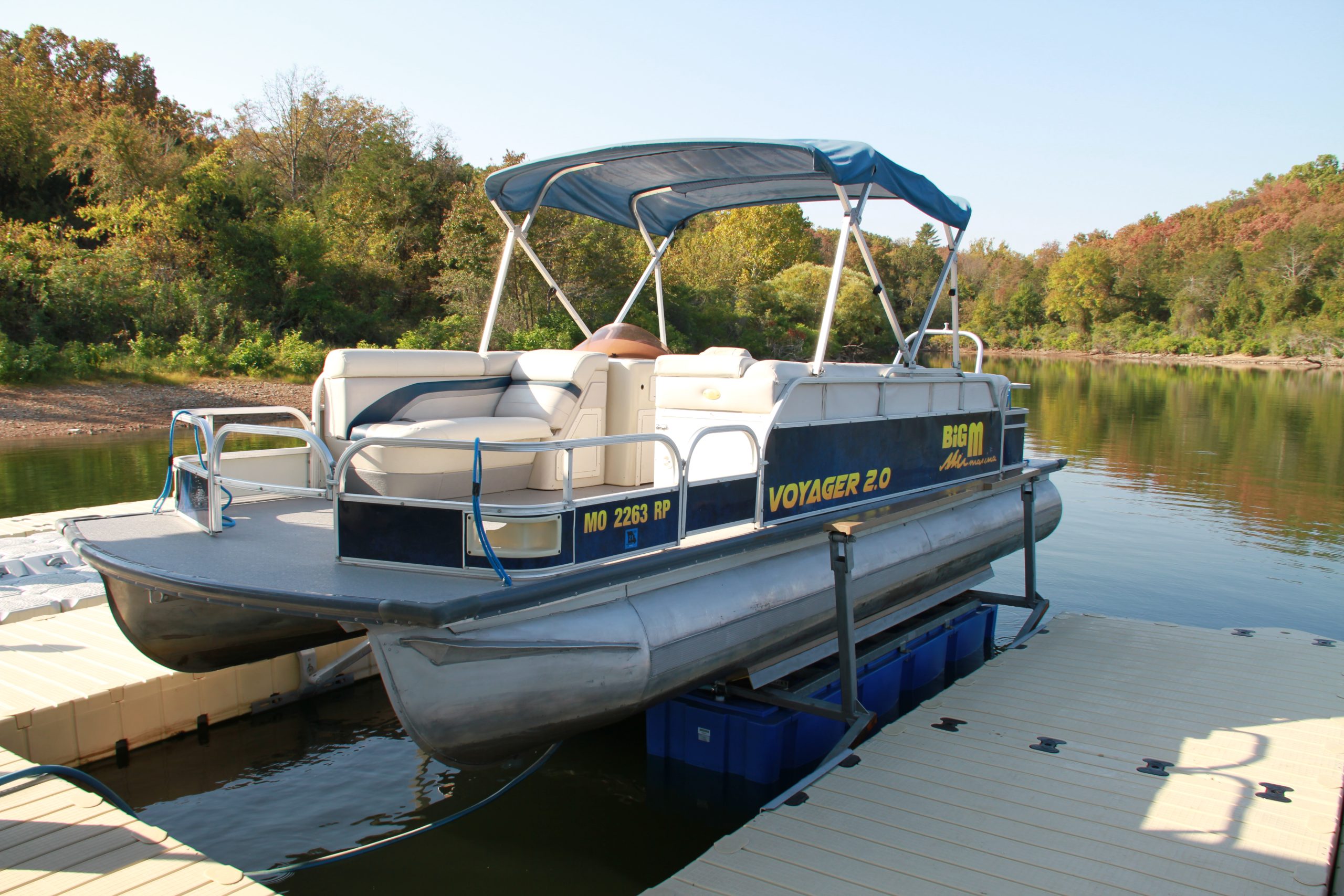
Understanding Floating Wave Attenuators
Be the first to know, sign up to get the scoop on product updates, new product announcements, and everything #docklife ., sign up to receive our email newsletter.
This site is protected by reCAPTCHA and the Google Privacy Policy and Terms of Service apply.
Email Me the Brochure
By submitting this form, you will be signed up to receive exclusive newsletters about our products.
- Architecture News – World Buildings
- Buildings by Country
- Buildings by City
- Architects by country
- Architects by city
- Architects alphabetical
- Competitions
- Building Events
- Architecture Design
That’s Yacht All: Marina Architecture
Marina Architecture, Yacht Buildings, Keppel Cove Marina China
That’s Yacht All: Marina Architecture Guide
Porto Montenegro & Portofino Yacht Berths – Leisure Port Design Article
That’s Yacht All: Marina Architecture Is In
When it comes to designing a marina, there is literally a world of inspiration to take from. The functions of a marina are basic and form the building blocks of some interesting designs.
From UNStudio’s Keppel Cove Marina in China, which is itself designed to look like a yacht, to Marina di Portofino on the Italian Riviera, which has maintained its minimal number of berths since its inception to give the traditional marina feel, to the Porto Montenegro Marina, which may just be the most luxurious marina in the world, to the historic nature of St Katharine Docks in London that witnessed so many events throughout its time as a trading port. Each marina offers something different from the designer and adds something interesting to the marinas the world has to show.
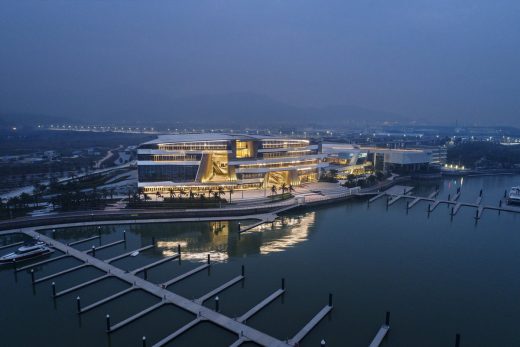
UNStudio’s Keppel Cove Marina
In Zhongshan, China, the concept of marina architecture and yacht architecture have been neatly blended when it comes to the design of Keppel Cove Marina. Designed by UNStudio, the waterfront clubhouse that is home to a host of naval activities was designed to resemble another maritime pastime: a yacht. The banks of the Xi River plays host to the spectacle, which gives the impression to visitors and passers-by through the wood panelling effects and the bronze exterior of high-quality yachts and boats.
The building has both land and waterside faces, which offer different designs in order to showcase the reason that they are there. The landward offers a huge sculptural tangle with no openings, while the waterside is glazed and open. The inspiration came from luxury yachts and the feelings associated with being aboard one.
As Betway explains, luxurious yachts are often a marvel of architecture – the mansions of the ocean. For example, the $55 million Sarastar has its own beach club and silk-textile decor throughout, showing that these are more than just boats. Large grilles and funnels inside of Keppel Cove Marina give the impression of a boat’s inner mechanisms, while vast staircases resemble those on a cruise ship. Overall, the building resembles a beach yacht and shows that the marina and yacht architecture trends can find a perfect harmony.
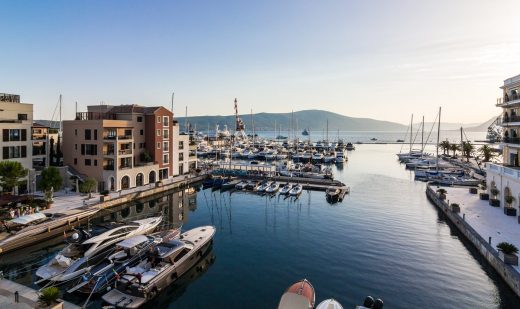
Porto Montenegro Marina
Once upon a time, the Mediterranean had a shortage of yacht berths. So, Porto Montenegro was born out of Adriatic architecture. A historic naval base, Porto Montenegro was transformed by Lord Jacob Rothschild and Peter Munk – who together have created brands such as Louis Vuitton, Hennessey, Moet, and Barrick Gold.
The site is close to the UNESCO World Heritage site designed to ensure the stewardship of the area for generations to come. The marina was designed by mariners and is complete with 450 berths and contains the world’s largest yacht berth at 250m. 95,000m2 of residential space is also available in the immersive community. The marina’s design is simple and contains a series of walkways that form the basis of the berths.
The expansive vista is a picture of wealth and extravagance and the yachts themselves are part of the design of the full marina. The Porto Montenegro Marina may comprise itself of a traditional marina look, but it does so to put other traditional marinas to shame with the polished perfection it has to offer.
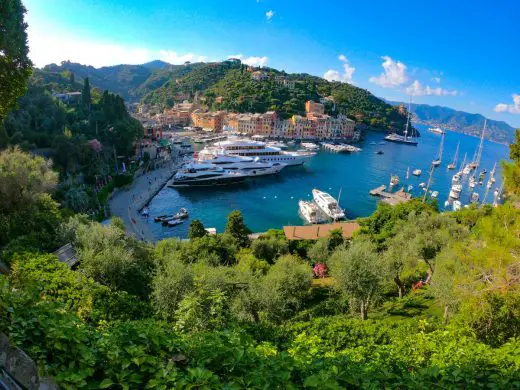
Marina di Portofino
Jumping from 450 berths to just 14 berths, the Italian Riviera’s Marina di Portofino is nestled in a former fishing village and has played host to some of the world’s biggest celebrities. When it comes to marina design, sometimes the simpler is best.
Instead of extravagant reliance on modes of electricity, concierge services, or intricate designs, the Marina di Portofino hides all the mod-cons of a modern marina in the traditional fishing village. Yet, the marina still retains the feel of a traditional property on the Italian Riviera. The berths look out onto the terracotta houses that scream authentic Italy and have come to become part of the Marina di Portofino’s design.
The berths have been used in the past by stars such as Eva Gardner, Marlon Brando, and Elizabeth Taylor and Richard Burton since the marina’s opening in 1902. Dubbing itself the Eighth Wonder of the World, the Marina di Portofino allows guests to embrace the traditional, while being served by the modern.
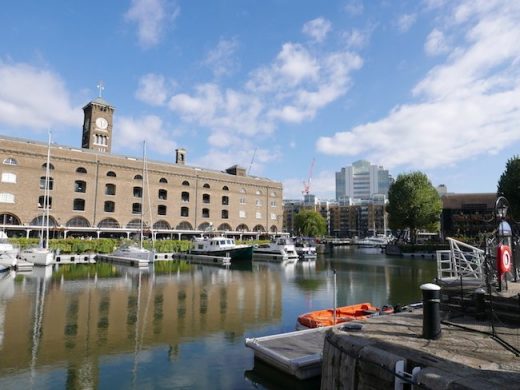
St Katharine Docks
London’s very own marina, St Katharina Docks , is located just off the River Thames before the Tower of London and Tower Bridge. The mixed-use development site evokes the nostalgia of the Big Smoke and was once home to the trading port, with spices, rum, materials, and all manner of exotic produce handled on it.
The marina was refurbished in 2017 and can accommodate 170 berths for yachts of 40m. The marina has the honour of the being the sole one to service central London and offers a quaint and sentimental design with stonework and mossy banks. The drawing factor for the marina is the environment it is situated in.
Events and tourist pulls are a stone’s throw away and St Kat’s has developed an edgy attitude to offer almost anything to the weary skipper: from shopping the high street to tasty the latest London food trend. The marina is unlike others in the world due to its proximity to one of the most bustling cities in the world, while it retains the charm and of a Britain long ago.
As long as a marina functions to hold a yacht and a platform onto dry land, the design around it is really up to the architect. You could choose to take inspiration from your environment, attempt to create something truly unique and bizarre, or simply design something workable that builds a strong and loyal yachting community.
Comments on this That’s Yacht All: Marina Architecture guide article are welcome.
Boathouse Articles
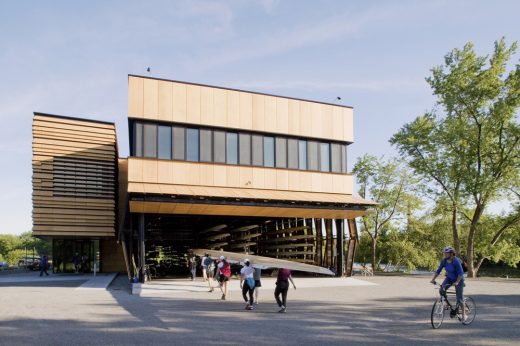
Boat Design Articles
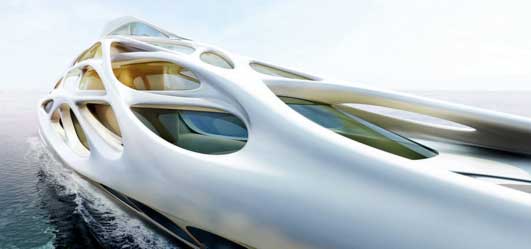
More Boathouse buildings:
Aure Boathouse Building
Combined Colleges Boathouse in Cambridge
Stoney Lake Boathouse , Stoney Lake, Lakefield, Ontario, Canada Design: gh3 architects Canadian Boathouse
Trossachs Boathouse Design: Sutherland Hussey Architects Loch Ard Boathouse
Community Rowing Boathouse , Boston, MA, United States of America Design: anmahian winton architects Community Rowing Boathouse Boston Building
Gonville & Caius Boathouse Site Development Design: Belsize Architects Gonville & Caius Boathouse
Loch Tay Property , Scotland Architect: McKenzie Strickland Associates Loch Tay Boat House
Comments / photos for the That’s Yacht All: Marina Architecture Is In page welcome
Website: UK

YACHT HARBOURS BY WALCON

Worldwide Leaders in the Design, Construction and Installation of Marinas and Berthing Facilities
Marina design.
Each yacht harbour or marina construction project is an individual contract that demands specific design requirements. Walcon Marine provides uniquely tailored design services for yacht harbours, marinas, pontoons, berthing and access bridges so that your marina construction project precisely fits your needs.
The company's experienced design team, coupled with its state-of-the-art computerised marina design systems, is able to produce the best possible layout, facilities and services to suit the particular marina design and construction requirements of any location.
« Return to Services
- Executive Management
- View All Residential Docks
- Leisure Docks
- Kayak and Paddle Sport Docks
- Floating Swim Dock Platforms
- Jet Ski Docks
- Rowing Docks
- Aluminum Gangways and Ramps
- Work Floats
- View All Commercial Docks
- Aluminum Floating Docks
- Floating Scaffold/Work Platforms
- Heavy Equipment Floatation Capabilities
- Floating Pump Supports
- Wastewater or Energy Plant Floating Platforms
- View All Camps and Parks Docks
- ADA Compliant Kayak/Canoe Launch Docks
- Floating Fishing Piers
- Summer Camp Floating Docks
- Floating Gazebo/Patio Docks
- View All Rowing Docks
- Low Freeboard Rowing Docks
- Rowing Launch Docks
- Rowing Start Docks
- Rowing Venue Design/Build Assistance
- Media Gallery
- Video Gallery
- Case Studies
- Testimonials
- Trade Shows

What are the Fundamentals of Designing a Marina?
- Marina Docks
Marina design is changing. Thanks to dock manufacturers’ changing processes, innovative marina designs are on the horizon, and the dock options your marina selects could help shape its future in the industry. What fundamentals are still in play, and what’s changing? Take a look.
What You Can Expect
One of the biggest things you’ll still see in every marina design is dock trends that fit the boats that must use them. While boats are trending bigger and bigger, docks still tend to be fairly small, so you can expect one big change – the size of the wet slips themselves. However, the problem is that regulators often dictate how marinas can configure the slips , which may impact this key marina design element.
The right materials have always been a key fundamental of marina design, which will not change anytime soon. Dock manufacturers have long been trending toward PVC and aluminum systems along with many rust-proof options, and that’s likely to continue. Composite materials will continue to lead the market as a key fundamental of marina design.
What You Might See
Regulations are pushing many things when it comes to marina design fundamentals, so things could change soon. In Dade, Broward, and Palm Beach counties, new codes mean no coated or exposed foam, so fully encapsulated foam floats are out there and in many other places around the country. Many marina designs will begin incorporating that change fairly soon.
Waler innovation is changing as well. Many are looking to hybrid wood and aluminum systems thanks to the severe storms places like Florida have experienced over the past few years. Expect additional changes in that market to create stability for marinas that may experience hurricanes and other damaging storms.
Additionally, larger breakwaters and floating attenuators could be a new fundamental when it comes to marina design. Bigger attenuators mean more dock space as well as added protection. While many looked at breakwaters as heavy-duty concrete modules, some are now looking at data to recreate their designs to make sure they will work before a storm hits.
What changes are you looking to incorporate? If you’re looking for a boat dock builder who can help you make the right shift, contact us today.
- Camps and Parks
- Floating Docks
- Kayak Paddle Sports
- Residential
- Uncategorized
Recent Posts

- First Name *
- Last Name *
- Phone Number
- E-mail Address *
- Phone This field is for validation purposes and should be left unchanged.
AccuDock is a global leader in the design and manufacturing of Floating Docks CALL 954.785.7557 OR EMAIL [email protected] FOR MORE INFORMATION

- First name *
- Last name *
- Phone number *
- E-mail address *
- Project Address * Street Address City State Alabama Alaska American Samoa Arizona Arkansas California Colorado Connecticut Delaware District of Columbia Florida Georgia Guam Hawaii Idaho Illinois Indiana Iowa Kansas Kentucky Louisiana Maine Maryland Massachusetts Michigan Minnesota Mississippi Missouri Montana Nebraska Nevada New Hampshire New Jersey New Mexico New York North Carolina North Dakota Northern Mariana Islands Ohio Oklahoma Oregon Pennsylvania Puerto Rico Rhode Island South Carolina South Dakota Tennessee Texas Utah U.S. Virgin Islands Vermont Virginia Washington West Virginia Wisconsin Wyoming Armed Forces Americas Armed Forces Europe Armed Forces Pacific State ZIP Code
- Type of dock * Type of dock Residential Commercial Camps & Parks Rowing Docks
- Average sea conditions * Average sea conditions Calm Boat wake Wind is only wave action Open fetch Rough Other
- Desired Budget *
- How did you hear about us * How did you hear about us Advertisement Online Advertisement Print Contractor Program Dealer Program Direct Mail Postcard Friend or Family Member GSA Internet Search Previous Customer Sales Introduction Social Media - Facebook Social Media - Twitter Social Media - Instagram Social Media - LinkedIn Trade Show Website Other
- Tell us about your project *
- Comments This field is for validation purposes and should be left unchanged.
Academia.edu no longer supports Internet Explorer.
To browse Academia.edu and the wider internet faster and more securely, please take a few seconds to upgrade your browser .
Enter the email address you signed up with and we'll email you a reset link.
- We're Hiring!
- Help Center

Yachts Parameters for Marina Design

The basic dimensions of power and sailing yachts are presented, as well as basic dimensions for two type of berths: Mediterranean ones and finger piers type (characteristicall for US and Australia). The idea was to collect different recommendations data, from different nautical tourism markets: US, Australian, British and Mediterranean, make compare, and give recommendation for Croatia. The other part of work deals with the wind effects on yachts. Wind parameters for wind calculation are defined in different standards. A discussion is presented on the state-of-the-art in marina design to accomplish these parameters from marina design experience in Mediterranean region and worldwide. The result tends to Croatian recommendation.
Related Papers
Dalibor Carevic
The analysis and presentation of plan view parameters for 39 marinas operating in Croatia is made in the paper to enhance improvement of the spatial and economic planning of nautical tourism in Croatia. The following plan view parameters were collected: number of berths, number of dry berths, breakwater length, fixed pier length, pontoon length, waterfront length, water basin area, territory area, total area, dry berth area, and parking area. The dependence of these parameters on the number of sea berths is presented, and average statistical indicators of these parameters, which characterise marine construction in Croatia, are defined.
Andrew Cornett , Graham Frank
Three dimensional physical model studies, at a geometric scale of 1:50, have been conducted to support the reliable design of a proposed mega-yacht marina project at Bridgetown, Barbados. A faithful scale model of the new mega-yacht marina, the surrounding bathymetry, and the adjacent shoreline was constructed and used to assess the performance of the new marina in a range of operational and extreme metocean conditions, and to refine and verify preliminary designs. Accurate scaled reproductions of a range of moderate and extreme wave conditions were generated in the model by means of a computer-controlled directional wave generator. The physical model was used to investigate many key issues including: wave agitation within the marina, wave overtopping, wave impact forces, the stability of revetments and scour protection stone, and the behaviour of moored yachts. Key findings included the optimal length for the curved breakwater, the strategic placement of two solid piers and a revet...
Neven Šerić
Coastal Engineering Proceedings
Ferika Özer Sarı
Tourism is a major subsector of services and it’s got diversified branches. Among those branches, marine tourism which is the most common one, reserves an important place in Turkey’s future by making contributions to national economy. In this regard, yachting and marina management are two significant subject areas which deserve closer interest. Like other tourism enterprises, marinas should cope with an increasing variety of services and competition environment. For marina managements to make right orientations and future positioning, it’s theoretically and practically useful to make business oriented analysis on them. In accordance with this aim, an extensive review of the literature has been made, marinas have been examined on site, besides, five marina managers in Turkey and one in Britain have been interviewed by using an unstructured in-depth interview technique as a qualitative research method. As a result of this study, knowledge and proposals put forward for all categories o...
Journal of Maritime & Transportation Science
astrid zekic , Nikolina Eva Pahljina
Croatia is one of the major Mediterranean destinations for nautical tourism owing to its countless attractions, indented coastline, numerous islands, climatic and other advantages. An important factor for achieving a full development potential is the availability of infra- and supra-structure, which is reflected through investments in new marinas, anchorages and other facilities. The article analyses accommodation capacities of ports for nautical tourism in Croatia. The authors give an overview of the current situation with an emphasis on the County of Primorje-Gorski Kotar. The purpose of this article is to analyse the growing need for accommodation capacities in nautical tourism ports and to point to the importance of building new marinas and berths, especially for boats long between 12 and 15 meters.
Anastasios Stamou
Á mathematical model is applied to calculate the water circulation in the marina of Latsi in Cyprus. The flow field in the marina shows the general behavior of coastal, wind driven flows, being strongly influenced by the characteristics of the entrance of the marina. The small dimension and the location of the entrance do not permit the inflow or outflow of significant flow rates, thus resulting to long flushing times. The use of two openings has been investigated. Computations show that the first opening plays a very important role, while the effect of the second opening is only of local and minor importance. This behavior is due to the orientation and the position of these openings with respect to the entrance. The use of the first opening results to a significant increase of the flow-rate passing through the inner part of the marina, which increases the magnitude of the velocities and reduce the flushing times. The use of the second opening leads to a significant short-circuiting...
Baraka George
Doris Perucic
This article analyses the award of concessions procedure for marinas in the Republic of Croatia, de lege lata (the current law) and de lege ferenda (the law that is to be proposed) and gives measures for improving the valorisation of the maritime domain. Croatia is one of the most desirable nautical destinations in the world due to its natural resources (climate conditions, beautiful landscape, 6278 km of coastline with 1185 islands, rocks and reefs), good infrastructure, quantity and locations of the nautical tourism ports and personal safety. Croatia’s tourism development strategy to 2020 identifies nautical tourism as one of the main strategic target. For this reason, it’s important to efficiently manage the natural resources including the maritime domain as one of the most important Croatian strategic resources. Maritime concessions serve as a vehicle of economic development and allow supervision over the use of the maritime domain in order to protect it. The award of concession...
3rd ICNTAD - 3rd International Conference on New Trends in Architecture and Interior Design
Seval Ozgel Felek , Burcin Cem Arabacioglu
Nautical vehicles are a combination of exterior styling and interior design. Exterior design formation creates space by means of external form and it also affects external form by partitioning and incoming interior spaces. Working should be done from inside to outside as well as from outside to inside. Interior design layouts should be made depending on the external filling and space positioning. Exterior design styling should be made depending on which typology wanted and also interior design layouts. The scope of the article is making a model proposal for trawler yachts including exterior styling and interior design layouts with parameters. " The process of shaping the yachts leads to the standardization. All the spaces that make up the nautical vehicles; gangway, windlass, starboard side, flybridge, porthole, sidewalk , swimming platform, etc are beginning to be known by its own unique name. When a nautical vehicle separates according to the spatial characteristics of these names, there is almost nothing left " [1]. By defining these spatial elements and their relation to each other and numerically determining the requirements of typology, a correct model will be introduced. And so, a guiding model for designers will be obtained and the first phase of the design will be completed by the addition of aesthetic value. Manifestation of the work, a database was built and exterior and interior analyzes of 12-22 meter yachts with trawler typology were done. The analysis of the international maritime standards SOLAS (Safety of Life At Sea) and Turkish Lloyd's regulation rules are added to the work. With the parametric formulas obtained from the sample yachts in the database and by applying the standards, exterior and interior partitioning could be done. As a result of the paper, a sample model is presented a new software extension. Discussion of the paper is this preliminary work will be carried out to add other yacht typologies to the software extension and to convert them into a package software.
RELATED PAPERS
Call WA 0812 5758 1474 Terlaris Jasa Epoxy Lantai Palembang
pabrikcat lantai4
Anja Geumann
Dimitry Papkov
Journal of Enam Medical College
Shahidur Rahman
Kurt Langfeld
Sandrina Teixeira
pierre risold
Frontiers in Forests and Global Change
Michael Ormsby
Jurnal Ekologi, Masyarakat dan Sains
Cecep Aminudin
António Santos
Elizabeth Smythe
Brazilian Journal of Medical and Biological Research
Vinicius bermond marques
Digital Studies/Le champ numérique
Liza Giffen
European Journal of Applied Mathematics
Rodolfo Brandao
arXiv: Classical Analysis and ODEs
Mykola Shpot
Tetrahedron Letters
Marta Ziegler-Borowska
The American Journal of Cardiology
Marjorie Perloff
Alice Ashcroft
Revista AIDIS de Ingeniería y Ciencias Ambientales. Investigación, desarrollo y práctica
Gloria Marinho
Tomas Montero Hernanz
The journal of real estate portfolio management
kjgg fdfdgg
Tohoku Journal of Experimental Medicine
Frontiers in Pharmacology
JEAN-EMILE DUBUC
See More Documents Like This
- We're Hiring!
- Help Center
- Find new research papers in:
- Health Sciences
- Earth Sciences
- Cognitive Science
- Mathematics
- Computer Science
- Academia ©2024

Digital Technology for Modern Marina Design

Three-dimensional modeling utilizing SketchUp and Lumion . Digital design technologies and drone-assist visualizations. These are the tools of modern marina design.
Today’s waterfront facilities are far from simplistic. They must be designed and engineered to withstand fluctuating environmental influences such as wind, waves, currents, seismic activity, and ice while also being attractive, accessible, and secure. They also need to provide services and amenities to satisfy a 21st-century boating community looking for a “second home” type of atmosphere. This curious fusion of planning, art, engineering, and science benefits from the use of modern design technology — and the skill sets of professionals like landscape architects to transition a project from concept to reality.
Concepts and Design Standards During the concept phase, landscape architects work directly with marina management to determine the project scope: general layout of the marina, inner harbor structures, number and size of boat slips, launching and parking areas, walkways, land-based support facilities and services, utilities, and overall marina aesthetic.
In the design phase, they utilize a couple of manuals: the American Society of Civil Engineers (ASCE) Planning and Design Guidelines for Small Craft Harbors — Practice Book 50 — as well as Marinas and Small Craft Harbors by Tobiasson and Kollmeyer, and collaborate with civil, coastal, structural, and geotechnical engineers to achieve recommended standards. These standards greatly inform the design parameters and are instrumental in assuring sound engineering, safe functionality, and a sustainable lifecycle. They address project elements such as channel and fairway width and depth, the layout of navigation lines, breakwater requirements, placement of wave attenuators, and the design, load impacts and performance metrics for fixed piers, floating docks and gangways — with a close study and understanding of local conditions such as hydrodynamics, potential flood levels, water circulation, and sedimentation patterns.
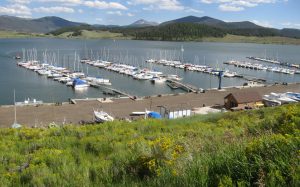
Digital Renderings and 3D Models Once the aforementioned infrastructure plans are in place, a landscape architect or other design professional can now begin to integrate form with function. Enter, design technology. Digital design tools provide the ability to create, model, and modify marina renderings. This helps marina management, boat owners and club members visualize project concepts, alternative layouts, building materials, color palettes, landscaping, trails and connectors, accessories, green spaces, recreation areas, and facility amenities. And helps create time and space for input, changes or new ideas — well ahead of construction, which saves on time and expense.
Drone photography is valuable during this stage and can provide the design team with images and videos of the proposed marina from a variety of vantage points. From here, designers begin building digital models of the site. First, 2D in programs like AutoCAD, then in 3D via modeling software programs such as SketchUp where project elements like piers and docks are built in.
Once the infrastructure is modeled in SketchUp, it transitions into an architectural 3D rendering software program like Lumion. Here, photos taken by the drone are uploaded and the marina renderings are spatially matched to the approximate perspective and focal length as the actual photographs. The designer can also place a virtual light source within the render to mimic the location and angle of the sunlight shown in the photo. This allows for a perfectly aligned representation of light and shadow which can be adjusted and re-rendered to show how a finished project might look at different times of day — or even by moonlight. Lumion is also where aesthetic elements can be added and altered: colors, textures, vegetation, or examples of different materials such as wood versus concrete decking. Options are limited by imagination only, so marina management has the opportunity to explore even the wildest of color schemes or experiment with the latest trends in materials, styles and accessories.
Finally, the 3D rendering produced in Lumion is brought into a graphics editing program like Photoshop where the proposed elements are layered on top of the photograph to merge them together with the existing conditions. Here, the designer adds the finishing touches to match colors, light, shadows, and textures.
Design technologies such as Lumion can also be utilized to determine space and design needs for land-based support facilities such as roads, parking, and storage lots. In this application, 3D renderings can be animated to show how vehicles and trailered boats move and maneuver through the site. They can help illustrate turning movements and depict the accurate turning radii for different lengths of vehicles and trailers, which is essential in developing or expanding travel routes, parking areas, and boat launch and retrieval zones. As the interest in recreational boating continues to grow — as does the actual size of boats — this technology is proving invaluable in designing and constructing safe, easy-to-navigate marinas and complementary on-shore systems.
The Value of Design Technology There are other efficiencies gained by using digital tools in the design process. These tools are meant to help clients think big while maximizing value. In the world of marinas, water is the most valuable thing, and every inch of it holds a dollar value. 3D models help visualize the best use of the space available. They also help marinas fill market gaps and meet the demand for amenities, whether that means offering a broader variety of slip sizes or a new suite of modern conveniences and comforts — the things that make today’s marina industry so competitive. On-site restaurants and bars, promenades, retail, storage, pedestrian and bicycle routes, broadband, boat repair facilities, general stores, laundry, showers, fish cleaning stations, picnic and grill areas, swimming pools — you name it. Any idea can be incorporated and illustrated into project renderings to aid in the decision-making process.
A higher level of modeling can also provide value to contractors. As we see the application of design technology within the construction industry increase, more and more contractors are requesting digital designs of some fashion. Why? Because working from 3D models gives contractors precision and control. This can shorten construction duration, and save on rework and material costs. If contractors know they have access to a quality model at the onset of the project, clients may see that reflected in the form of lower prices during construction bidding.
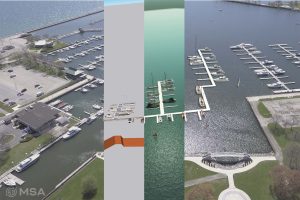
There is also graphic value in being able to share and communicate with local stakeholders what a new marina or waterfront facility might look like. A 3D model or rendering is a powerful marketing tool and can tip the scales when it comes to selling boat slips or convincing boat owners the return on the investment is a good one.
The Milwaukee Yacht Club The Milwaukee Yacht Club is the oldest premier yacht club on Lake Michigan, located in the heart of the city at McKinley Marina . With a reputation of spirited camaraderie and sophisticated marina amenities, this club currently offers 64 slips ranging in length from 30 to 90 feet, with a waitlist of interested members ready to join.
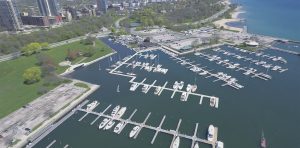
A marina located on any of the Great Lakes comes with its own set of challenges, with big-water activity, wind and wave events, ice, and fluctuating water levels. In 2020, extreme high water caused damage to the club’s aging fixed dock system. The club asked waterfront designers and landscape architects at MSA to design a new floating dock system, with expanded capacity and upgraded utilities to meet rising demand. Utilizing drone photography and the 3D modeling software programs SketchUp and Lumion, MSA designers created custom renderings for the proposed project, along with some potential new on-shore perks and services for consideration. The designs allowed MSA to help the Milwaukee Yacht Club maximize their valuable water real estate, and organize slips in a manner that would preserve space while accommodating an influx of larger watercraft in the future — all while delivering a safe navigational experience and pleasing marina ambiance.
Modern marinas deserve modern technologies. Digital design allows them to exceed operational standards and revolutionize what is possible in form and function. Whether refurbishing an existing marina or planning a new one, the tools and talents of today’s design professionals help deliver something extraordinary.
Dan Williams, PLA, ASLA, AHLP is senior landscape architect at MSA. You can reach him at [email protected]. Luke Geiger, PLA is landscape architect at MSA. You can reach him at [email protected].

Section 2: Designing Marina Facilities and Structures
When marinas are designed with consideration of land and water quality in mind, they can be an asset instead of a detriment to the ecosystem. They can allow for quiet, sheltered waters. A marina can assist in replacing natural habitat that allows for feeding and spawning. Subsequent pollution prevention measures taken by the marina will help maintain or even improve water and habitat quality, leading to a more aesthetically pleasing marina.
Maintaining water quality within a marina basin is very important. The water quality and biological health of marinas depends largely on how well water circulates and is flushed within and through the basin. If a marina is not properly designed, pollutants will build up in the water or sediments. Excess dredging to create deeper water can slow flows and diminish re-oxygenation of waters in the marina basin.
The final design of a marina should be a compromise of marina capacity, services, and access, while minimizing environmental impacts, dredging requirements, protective structures, and other site development costs.
Learning Objectives
By the end of this section, you should be able to:
- Pursue a marina design that capitalizes on your site’s natural features.
- Understand the importance of water circulation and the influence of your marina design.
- Identify design and construction practices that minimize environmental impact.
- List a range of shoreline protection options and select the “softest” option that meets needs.
- Incorporate plans to conserve resources (e.g., water conservation, recycling).
Best Management Practices
- Obtain appropriate permits
- Use open design fixed or floating piers to enhance water circulation
- Use environmentally neutral materials
- Limit shaded areas over the water
- Minimize need for dredging
- Minimize the impacts of dredging
- Employ nonstructural shore erosion control measures
- Conserve water
- Anticipate recycling needs
Obtain Appropriate Permits
Use Open Design Fixed or Floating Piers to Enhance Water Circulation
Marinas must be carefully designed. Incorrectly designed structures can amplify wave action, which exacerbates erosion, creates excessive shoaling, and interrupts or restricts circulation — all of which can increase unfavorable environments.
While being mindful of the need for pier or dock systems to provide access during routine operations and under emergency circumstances (e.g., evacuation preceding or during a storm), piers and other structures should be placed to enhance, rather than to obstruct, water circulation.
- Select an open design for new or expanding marinas. Open marina designs have little or no manmade or natural barriers to restrict the exchange of ambient water and water within the marina area. Install wave attenuators (if permitted) to reduce the force of incoming water, if protection is necessary and conditions are appropriate. Wave attenuator use is limited to bodies of water with fetch restricted to roughly 3- 5 miles or less. Wave attenuators do not restrict water exchange, nor do they interfere with bottom ecology or aesthetic view. They are easily removed and do not significantly interfere with fish migration and shoreline processes.
- Design new or expanding marinas with as few segments as possible to promote circulation within the basin (refer to figure below). The fewer the segments, the better the circulation.
- Use a mechanical aeration system (water circulating system) to aerate areas with poor flow. Aeration systems need to be routinely inspected to avoid becoming encrusted with zebra and quagga mussels and other organisms. Submersible pumps may be protected with materials that resist attachment (e.g., brass and galvanized steel). This also holds true for air lines if a bubbling system is employed. Circulators can also minimize icing during winter.
- Advantages of floating docks systems include the adaptation to fluctuating water levels; the capability of removing them in the winter to avoid ice damage; and zebra and quagga mussels can be easily removed when the docks are stored on land.
“In January 2010 [our] marina changed over from fixed piers to floating piers. With the improved technology, floating piers are the best way to go. We went with removable concrete decking panels 2’x3′. This allows you to be able to remove them to do any type of repair. A good example of this benefit was the spring of 2011 after the first winter of the docks being installed, we discovered a broken waste pump-out pipe. We were able to remove several panels to gain access to the leak and repair the pipe and install a valve to drain excess water in a lower area.” – A Wisconsin marina harbor master, 2013.

Figure: Example of marina designs (Source: U.S. EPA 2001).
For more information on marina design, see: Marina Flushing – Siting and Design (EPA Management Measure) and the American Society of Civil Engineers’ (ASCE) Manual and Reports on Engineering Practice, No. 50: Planning and Design Guidelines for Small Craft Harbors, Third Edition.
Additional Marina Design Considerations
- If you are expanding a marina, consolidate new development and expansion within the present footprint of the facility (land and water). Expanding into the upland areas rather than building out onto the bottomland is preferred. This avoids the loss of access to public trust waters and bottomland.
- Damage from ice can potentially cause oil and gas spills and the deposition of debris. Identify areas prone to ice flows and come up with construction or management solutions.
“When we were designing the new marina we considered installing a pump-out system where we could pump-out tenants’ holding tanks while their boat was in their slip. [One supplier] offered a system that provided a recessed hydrant on the dock that allows us to pump out four boats for every hydrant. This amenity really makes our tenants happy!” – A Wisconsin marina harbor master, 2013.
Use Environmentally Neutral Materials
- For new pilings and other structures that are in or near the water, use materials that will not leach hazardous chemicals into the water and which will not break down (e.g., reinforced concrete, coated steel, recycled plastic, vinyl sheet piling, or plastic reinforced with fiberglass).
“If you are converting your fixed docks to floating docks and have sound pilings, you should seriously consider reusing the old pilings. [Our builder] was able to construct our floating piers using most of our outer pilings to anchor our docks. This ended up saving us thousands of dollars.” – A Wisconsin marina harbor master, 2013.
- Contain shavings when field cutting plastic pilings and timbers.
- Avoid use of coal tar sealants on paved areas; they are a source of harmful contaminants (PAHs) that can impact the health of humans, fish, and wildlife.
- Use naturally durable timbers conservatively. Black locust, cedar, chestnut, and white oak are naturally durable but expensive and may be hard to find.
- Avoid exotic timbers. Some tropical trees, such as greenheart and bongossi, are also naturally durable, but their harvest is harmful to tropical forests.
- Purchase floatable foams that have been coated or encapsulated in plastic or wood. As these floats age, degraded foam is contained by the covering. Unprotected floats may become inhabited by muskrats and other mammals, seriously reducing the flotation capability of the dockage.
- When designing and constructing marina buildings and related facilities, consider incorporating “green building” practices. For more information, see: LEED guidelines.
Other design considerations include safety and navigation in the marina basin and adequate parking. For more information on these issues and others with regard to designing marinas, see: American Society of Civil Engineers’ (ASCE) Manual and Reports on Engineering Practice, No. 50: Planning and Design Guidelines for Small Craft Harbors, Third Edition.
Limit Shaded Areas Over the Water
- Submerged aquatic vegetation and near-shore, bottom-dwelling organisms require sunlight. In order to provide them with as much sunlight as possible, limit the number of completely covered slips.
- Choose docking systems that minimize light blockage.
Minimize the Need for Dredging
New marinas must be located in areas where deep water can be reached with a minimum of excavation, filling, and dredging. Existing marinas that require maintenance dredging more frequently than once every four years should investigate practical options to increase circulation or reduce sediment accumulation. Possibilities include:
- Dredging channels to follow the course of the natural channel.
- Providing dry storage for smaller boats.
Minimize the Impacts of Dredging
The majority of marina development and expansion projects along the Great Lakes, including dredging, will require a permit from the U.S. Army Corps (USACE) of Engineers and the responsible state agency. To streamline this process, “joint permits” are often offered. For more information, see the State Laws page for your state.
Dredging has the potential to impact fish spawning and juvenile fish survival. Direct impacts to the area dredged include destruction of spawning habitat, destruction of fish eggs, and mortality of fish within the dredging area due to removal of bottom substrates and resulting high levels of suspended silt. Currents can move silt particles suspended during dredging away from the site and deposit them in spawning or juvenile fish habitats some distance away.
Sediment testing may not be required for every dredging permit application. In some cases the state agency may require dredge material characterization. Contact your state agency early in the planning for dredging to see what is required. If required, sediment testing data need to be submitted with the permit application. The testing data will determine the appropriate disposal site and impose conditions on the site such as a clean soil cap, fencing, etc.
The dredging permit will require actions to minimize the subsequent impacts.
- Use dredging methods, like hydraulic dredging or the use of low-turbidity, mechanical dredging buckets, which minimize environmental impacts.
- Always use silt curtains to contain suspended sediments.
Employ Nonstructural Shore Erosion Control Measures

The booklet, Along the Shore, includes information about shoreline management activities, ordinary high water mark, Michigan laws, and the Public Trust Doctrine.
Waterways are often lined by structures designed to stabilize shorelines, protect property from flooding and erosion, or to accommodate commercial navigation or industry. These structures have historically been made of wood or metal pilings, rock, or reinforced concrete. Many Great Lakes shorelines are marked by seawalls, revetments, breakwaters, groins, and jetties. Over the years, such “hard” engineering has been recognized to have its own environmental consequences.
While traditional hard structures continue to be installed or maintained around the Great Lakes, rising awareness of their detrimental effects are leading to a call for “soft” engineering to protect the shore.
Soft shorelines utilize ecological principles and practices to reduce erosion and achieve the stabilization and safety of shorelines, while enhancing habitat, improving aesthetics, and often saving money.
Soft shorelines are characterized by the use of vegetation and other materials to soften where land meets water. Hard shoreline structures tend to take up less space and may have an advantage in environments that are prone to erosion. However, mandatory “no wake” zones in and around marinas will allow soft shorelines to be more successful.
A coastal engineering analysis will be required to determine whether a hard structural solution or soft, bioenegineered approach can be used, as well as the nature of the vegetation or armoring type needed to create the necessary protection. Ideally, the protection method used will mimic or be sympathetic to the existing environment.
- Beach nourishment entails the introduction of replacement material to restore waterfronts degraded by erosion. If using this option, take care to avoid transfer of undesired elements in the new material (e.g., invasive species, pollutants) and also when introducing vegetation to stabilize the new material. Beach nourishment is appropriate only if a beach was once present and if there is still room to rebuild the beach. The restored beach will likely have a larger footprint than a hard solution, so there is a tradeoff of physically changing a larger part of the environment to create a beach — versus building something with a smaller footprint and preserving the remaining natural areas instead. A beach environment would also not be the same environment as a wetland or mudflat, so the local biology should dictate the solution type.
- Because soft engineering uses living structures, which tend to stabilize with time, soft engineering of shorelines is typically less costly to install and maintain than hard engineering.
- If nonstructural measures alone are not sufficient to control erosion, use structural controls to stabilize and ensure the long-term viability of the nonstructural controls. As a last resort, use structural controls in this order of preference: shoreline revetments (riprap) and bulkheads (vertical walls, concrete, or steel sheet pile). The structure of riprap armor may serve as forms of habitat and, in some circumstances, can allow vegetation to re-establish between the armor pieces. It is also composed of natural and native material. Vertical walls typically stymy habitat formation and the material is not always compatible with the existing environment.
- A combination of soft and hard solutions may be possible (e.g., intersperse plantings with riprap). Local organizations may provide additional guidance on natural shoreline landscaping and bioengineered erosion control techniques. For example, the Michigan Natural Shoreline Partnership (MNSP) trains and certifies professional waterfront contractors.
- Minimize the adverse effects of erosion control projects on adjacent properties, navigation, threatened or endangered species, and significant historic or archaeological resources.
- If you have erosion-prone areas, designate a “no wake” or “no boating” zone to reduce sediment re-suspension from prop wash or destruction of shallow water habitat.
- Consult with local and state permitting authorities for sediment control requirements and use soil erosion control practices during construction.
Additional resources on shoreline management:
- Coastal Issues in the Great Lakes Region (GLIN)
- Shoreline Management (Michigan State University)
- Coastal Communities and Land Use publications (Michigan Sea Grant)
Conserve Water
It sometimes seems like water is a limitless resource, but the fresh water that is available for use is limited. Water is constantly being recycled through the earth’s water cycle. However, water is often used faster than it can be naturally replenished. Conserving water and other natural resources saves energy, helps the environment (by taking some of the stress off the resource), and saves money.
- Equip all freshwater hoses with automatic shutoff nozzles.
- Fix any dockside faucet and hose leaks and drips.
- Install “low-flow” faucets, toilets and shower heads at public marina toilet facilities.
- Install automatic faucets and toilet fixtures.
Anticipate Recycling Needs
State and local laws may require provisions for recycling of certain waste materials.
- Anticipate needs for collection bins and pick-up services when designing a marina.
Next: Unit Review

Newsletter Signup
Please check the errors in the form and fill the required fields with *

Marina Feasibility & Design
There are two fundamental questions that we ask at the start of any new yacht and superyacht marina project: Is this marina viable? And if it is viable, what should it look like?
The marina design development follows a well established process which involves a series of feedback and review loops. As facts are found, we question our assumptions, revise our marina designs and re-run financial models. And we repeat this process until robust conclusions can be drawn.
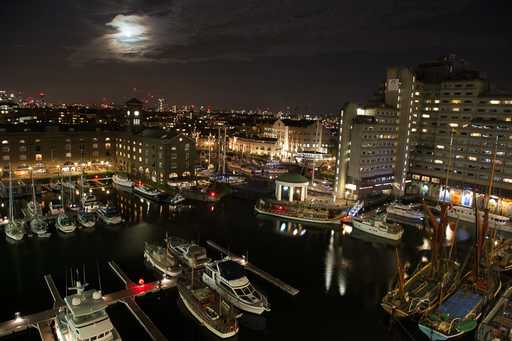
Case Study – St Katharine Docks
Flexible berth layout provides a maritime centre for international events based in London
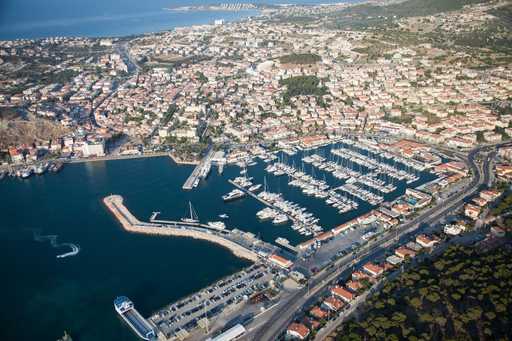
Case Study – Cesme Marina
Winner of 2014 PIANC Marina Excellence Design Jack Nichol Award
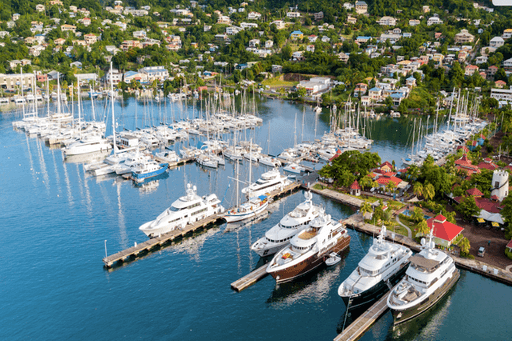
Case Study – Port Louis Marina
Transformed a wreck-strewn lagoon into the south Caribbean’s finest marina
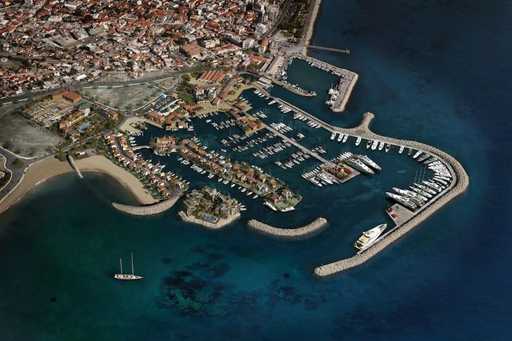
Case Study – Limassol Marina
Integrated a 520 berth marina with a shoreside commercial zone that redefined the city waterfront
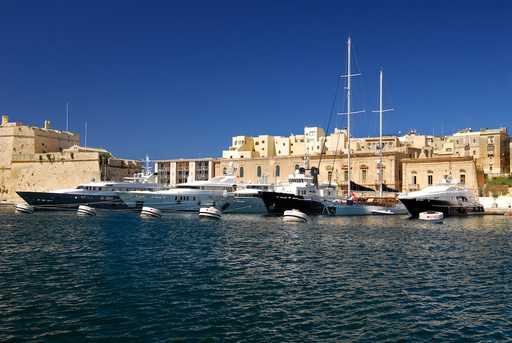
Case Study – Grand Harbour Marina
A complete renewal of a derelict waterfront in a historical setting
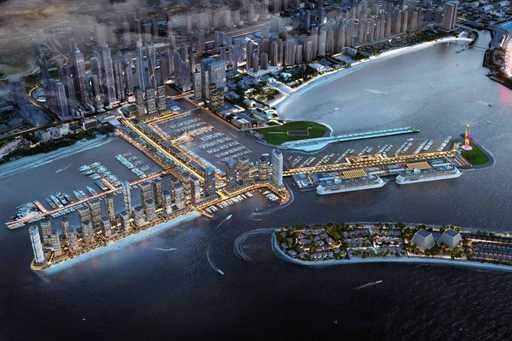
Case Study – Dubai Harbour
Largest maritime and leisure hub in the Middle East designed by Camper & Nicholsons Marinas
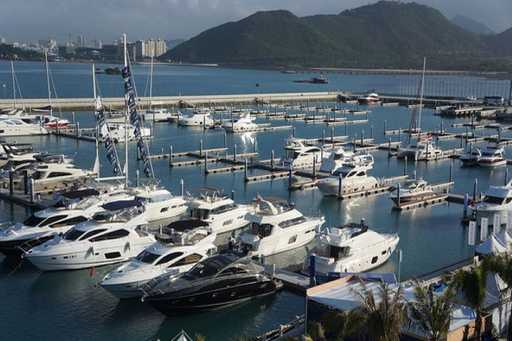
Case Study – Sanya Marina
Increased revenue from an improved berth mix
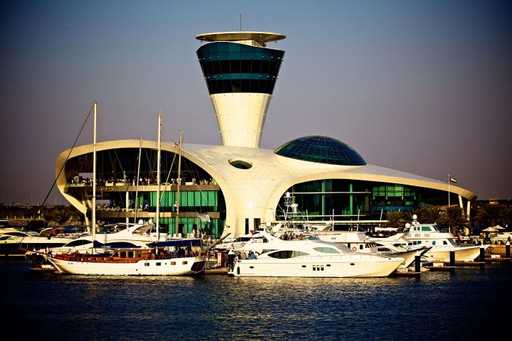
Case Study – Yas Marina
We grew annual occupancy from 13% to 87% in under 3 years and hosted five F1 Grand Prix events
We use cookies to give you the best online experience. By using our website, you agree to our use of cookies in accordance with our cookie policy. Click here to read our cookie policy.

+44 (0)23 9252 6688
Waterfront development consultancy at its best, worldwide
Marina Projects has worked on over two hundred different projects over the years in both the UK and across the world. Depending on the client’s vision and scale of the project, waterfront developments may take anything from a few months to several years to complete.
Here, you’ll find a selection of our projects, demonstrating our experience and the broad range of consultancy services provided by Marina Projects.
For more information on any of the projects and services we offer, please call +44 (0)23 9252 6688 or use the contact us button.
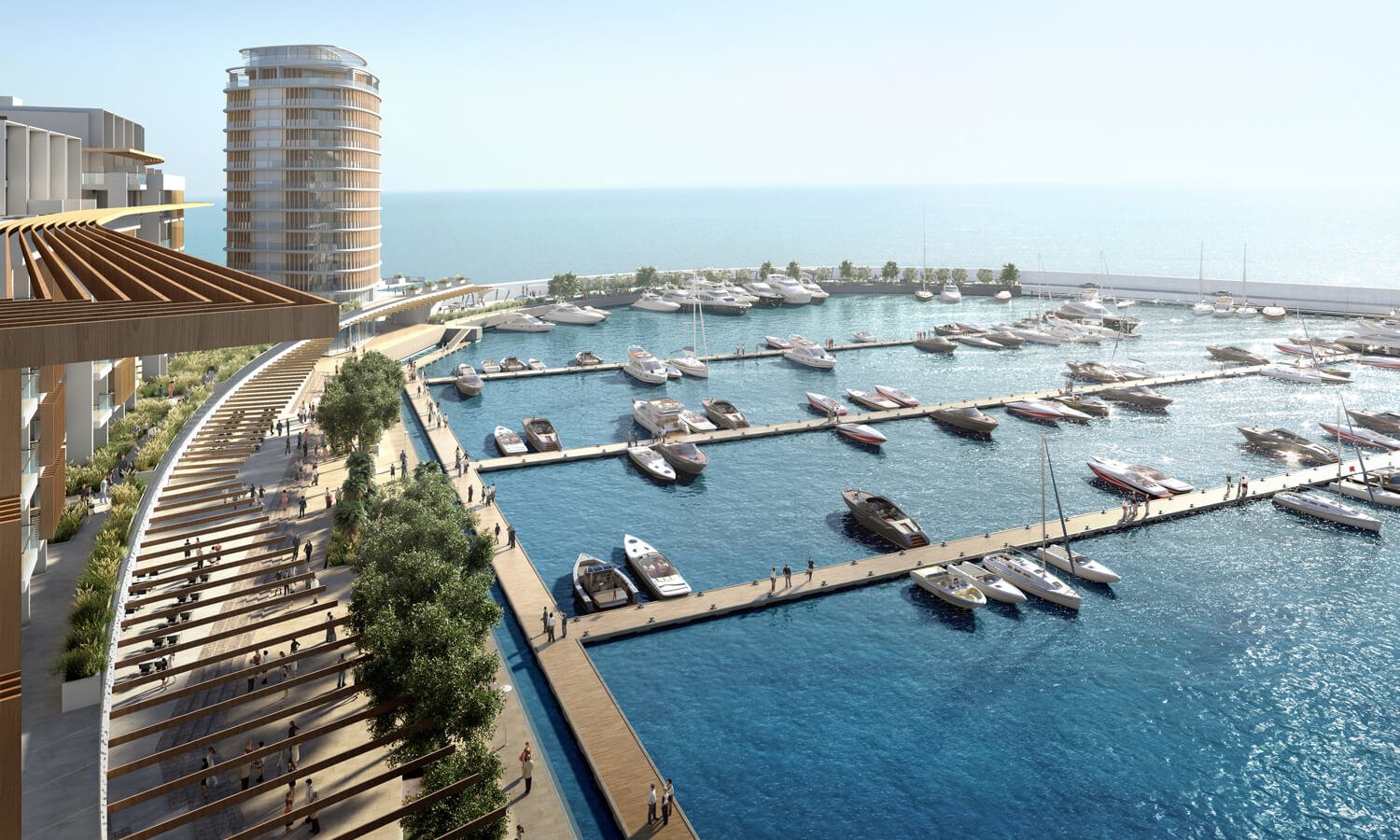
As designated marina consultant for Paralimni, Marina Projects has been providing continued support, developing the winning marina concept.
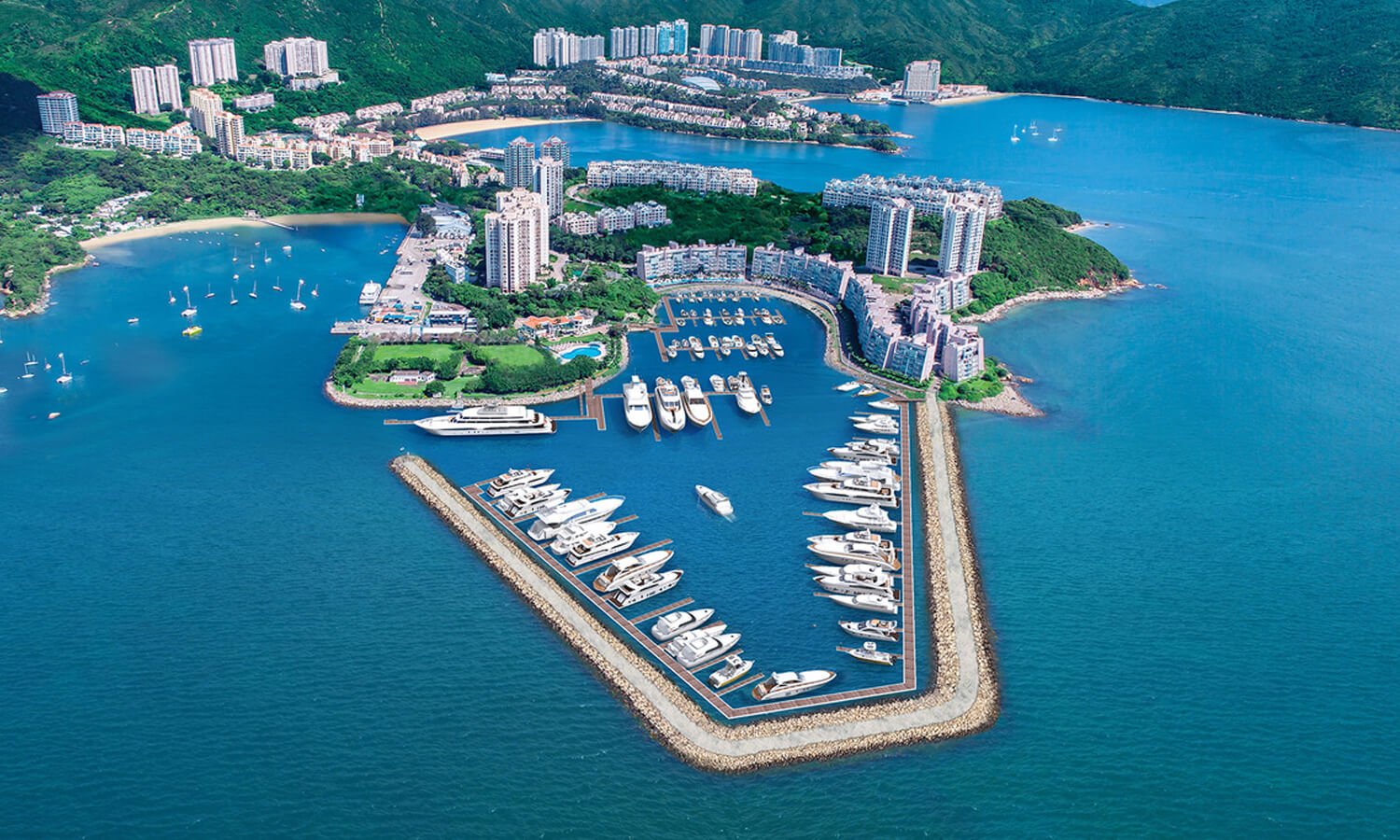
Marina Projects provide specialist marina advice to Lantau Yacht Club. Their sturdy and robust pontoon units are engineered to withstand extreme loading forces exerted by superyachts.
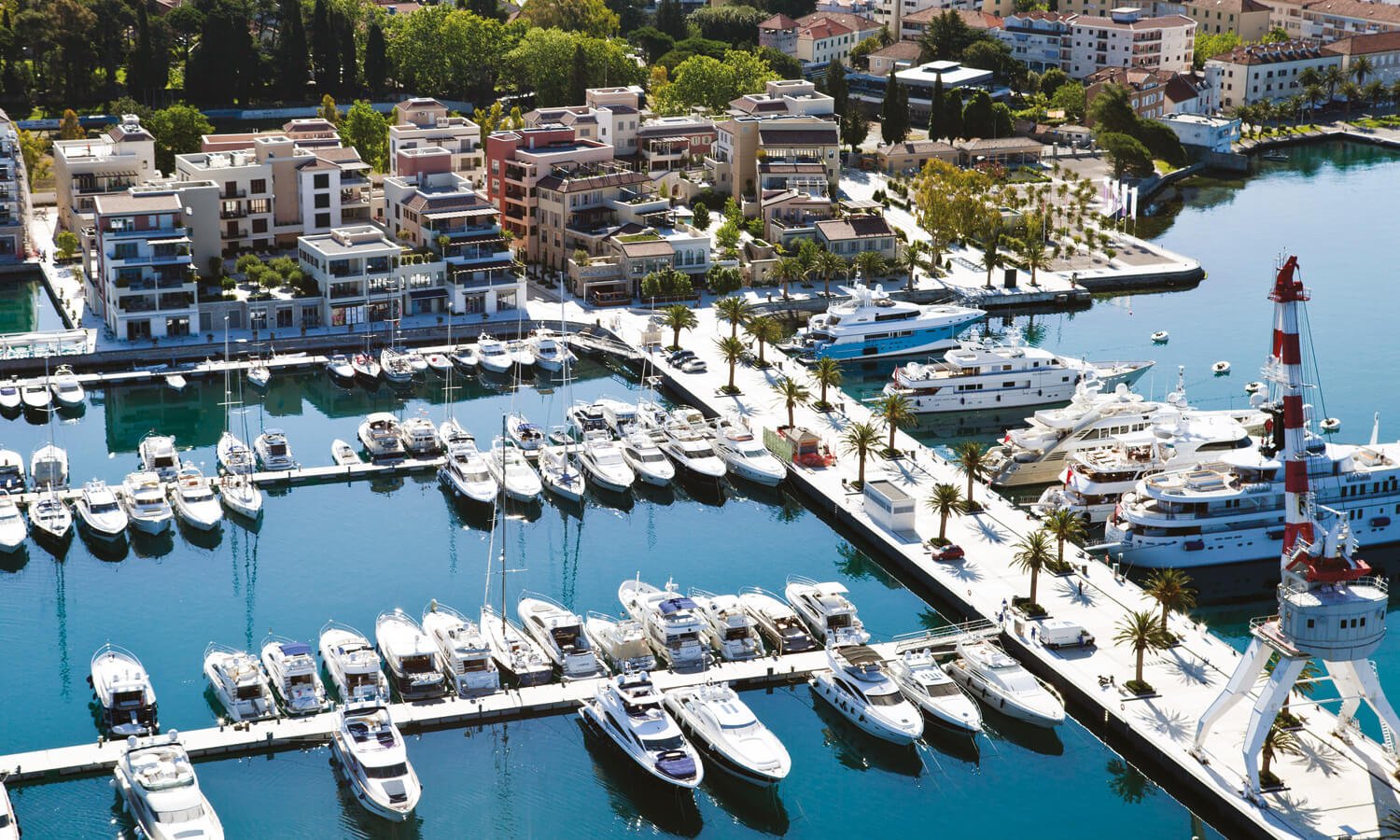
Porto Montenegro is a superyacht marina and waterfront development conceived by Peter Munk the renowned Canadian businessman.
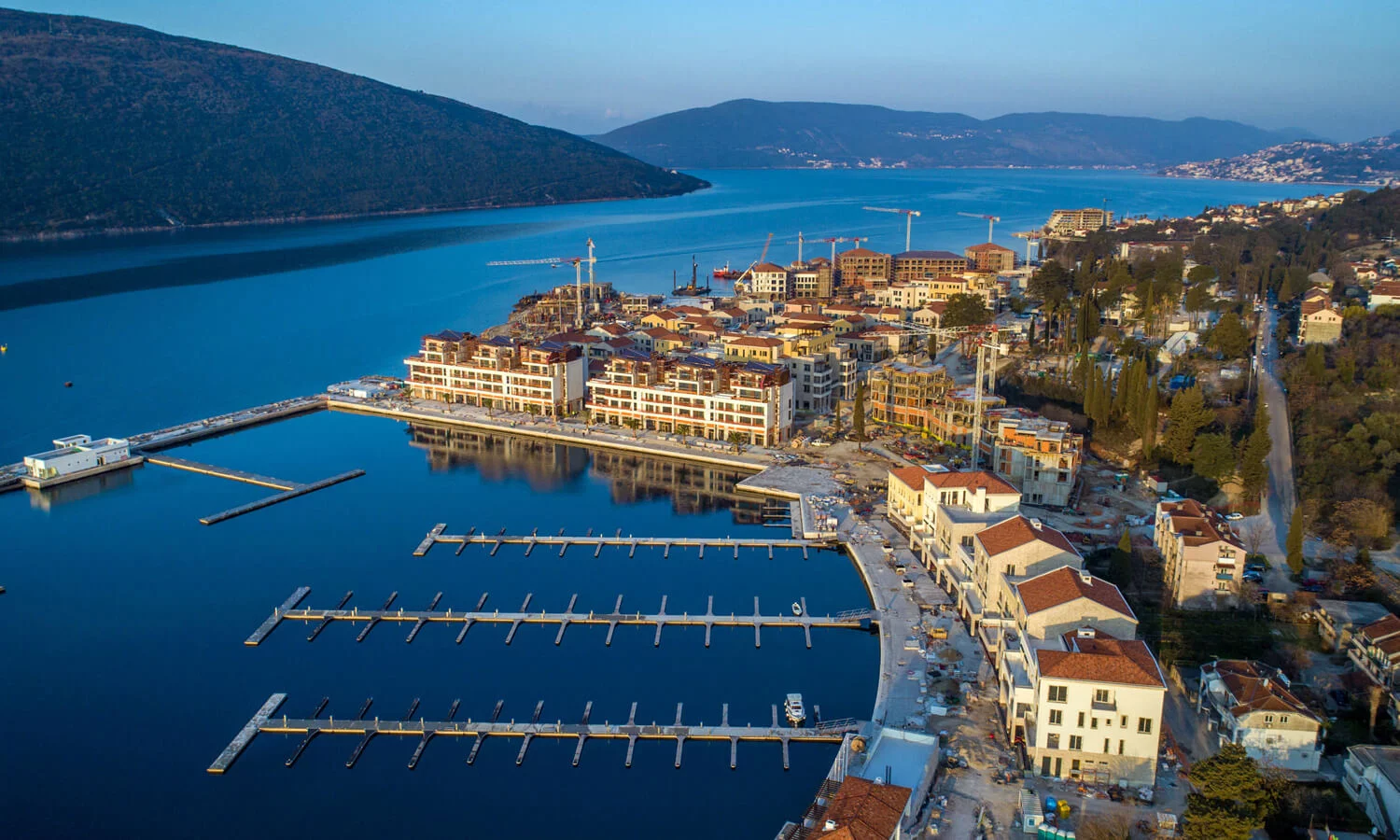
Portonovi is set to be a world class resort, comprised of a 5 star branded hotel, high-end residential units and a fully serviced marina.
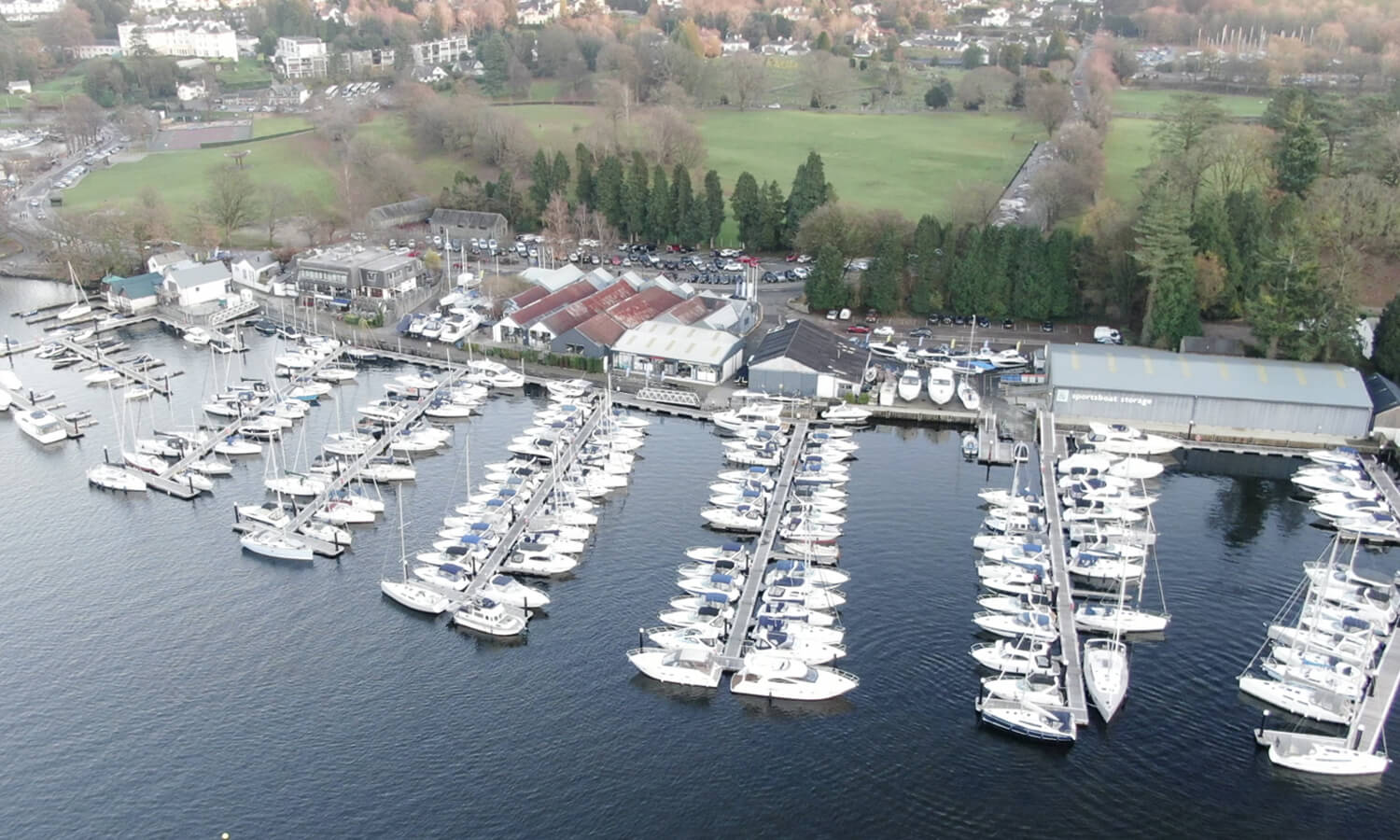
Marina Projects has secured a vital planning permission for the extension and reconfiguration of Windermere Quays Marina at Bowness on Lake Windermere.
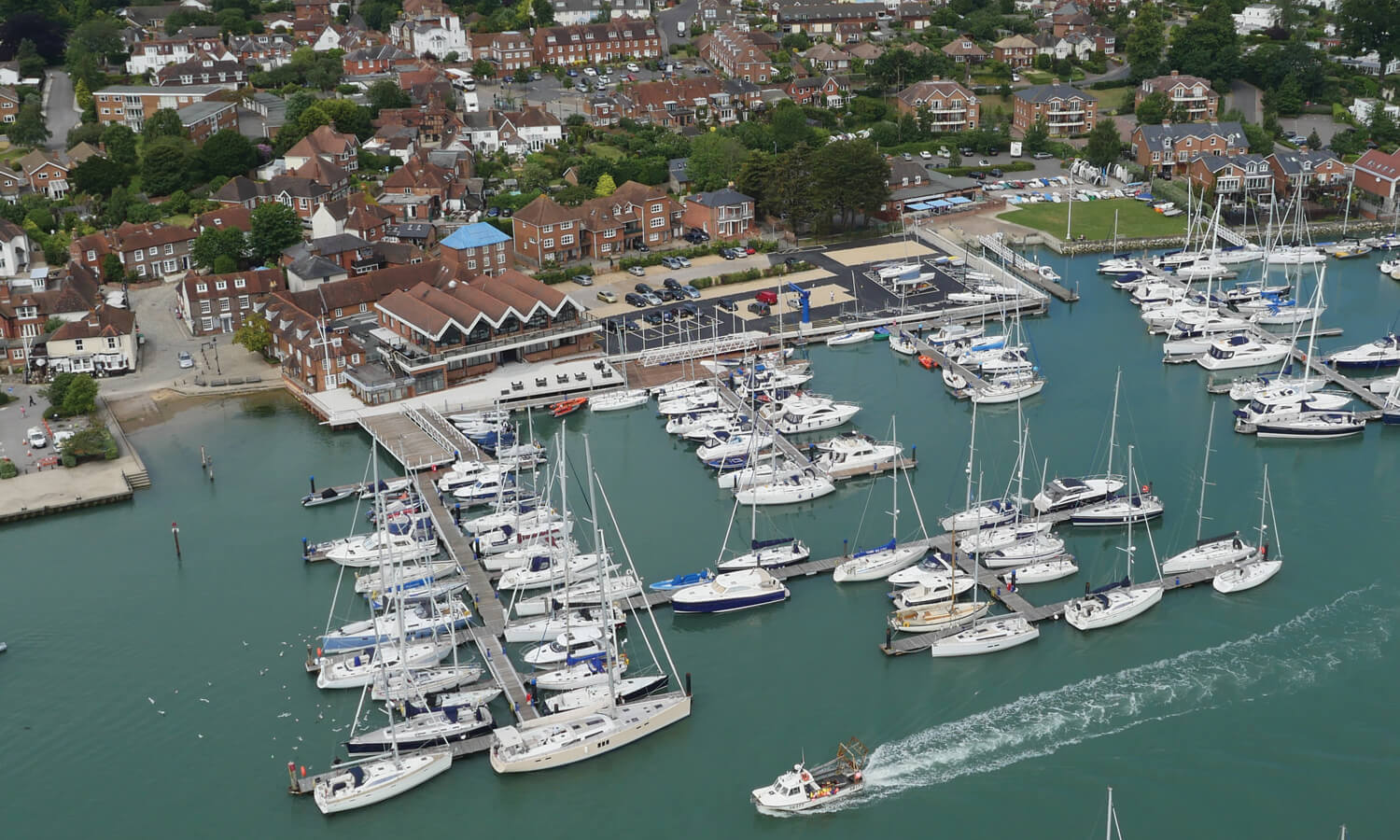
Marina Projects has led a major £2.6m redevelopment project for the Royal Southern Yacht Club and the Royal Air Force Yacht Club on the River Hamble.
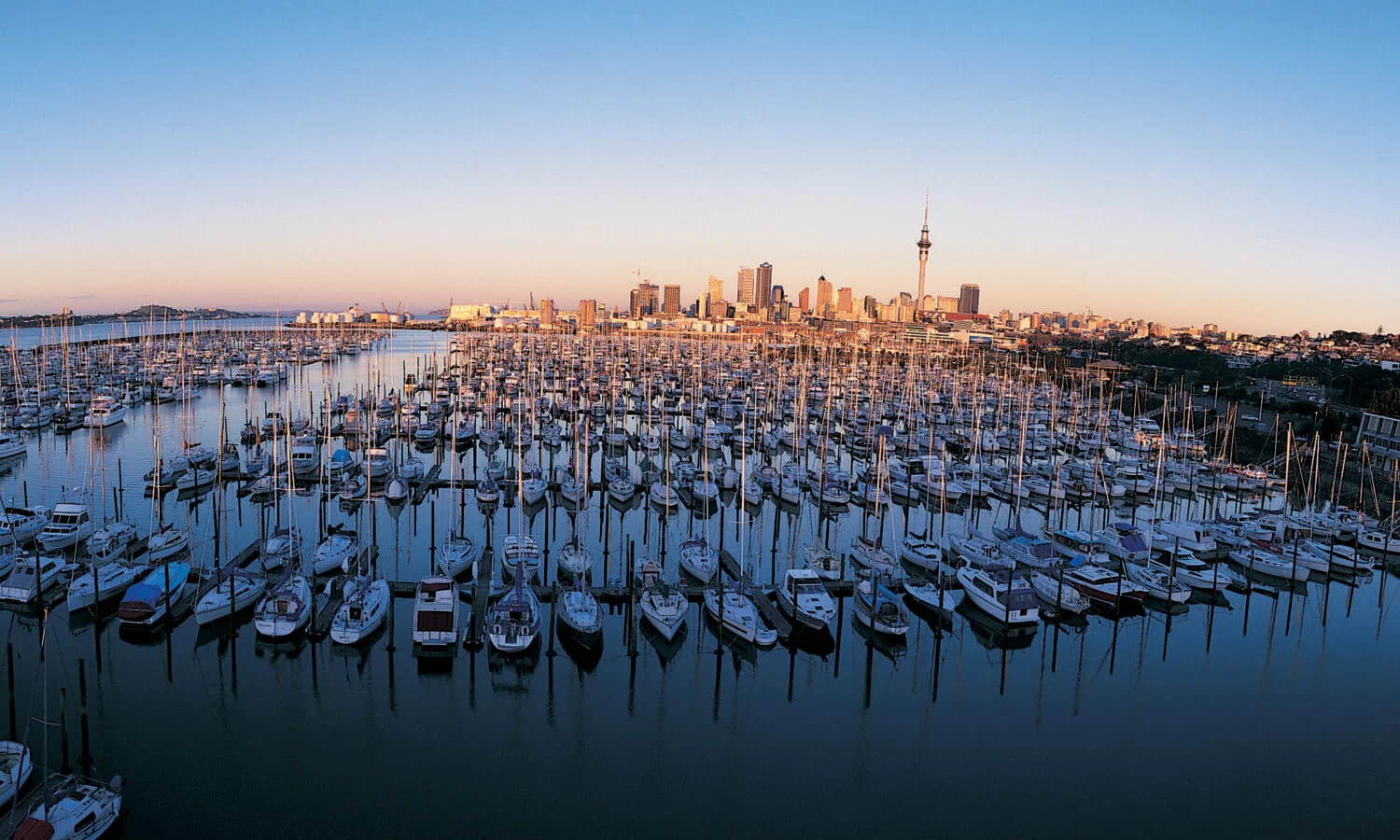
Westhaven Marina is one of the largest marinas in the southern hemisphere with some 1,900 berths.
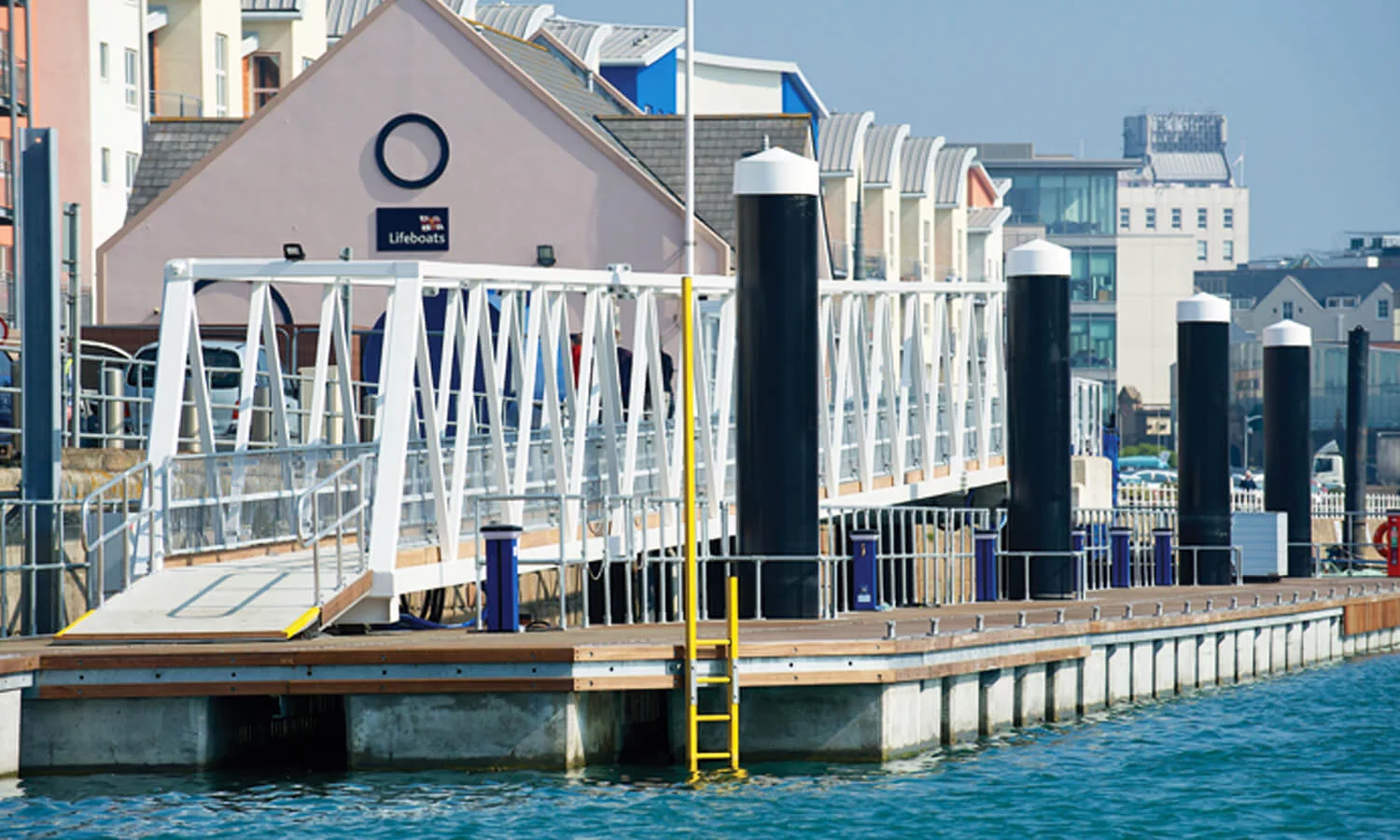
The scope of work undertaken by Marina Projects included a detailed consultation process that engaged with all key stakeholders and harbour users.
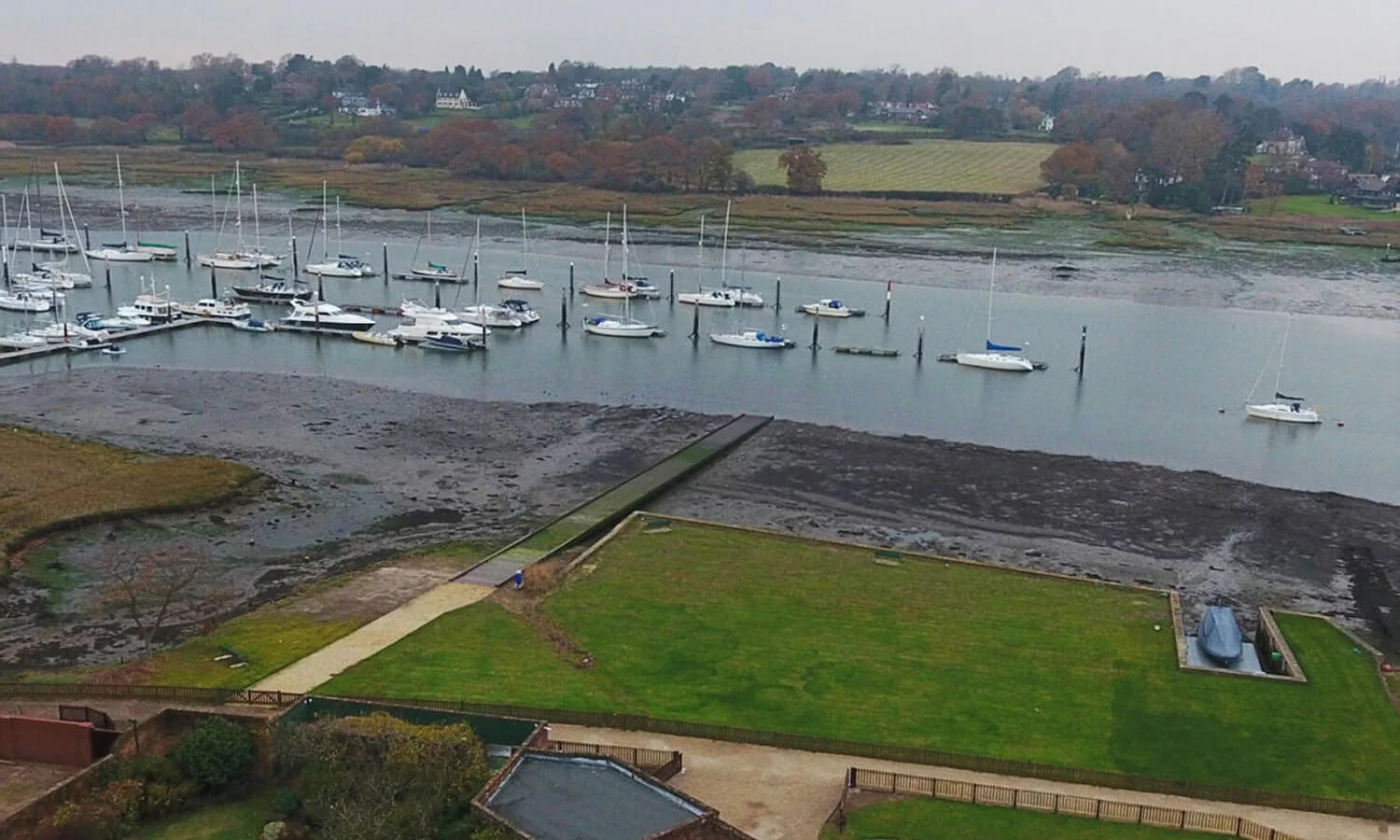
A Slipway scheme for a Private Property Owner on the River Hamble. Marina Projects delivered the project from feasibility through consenting to delivery.
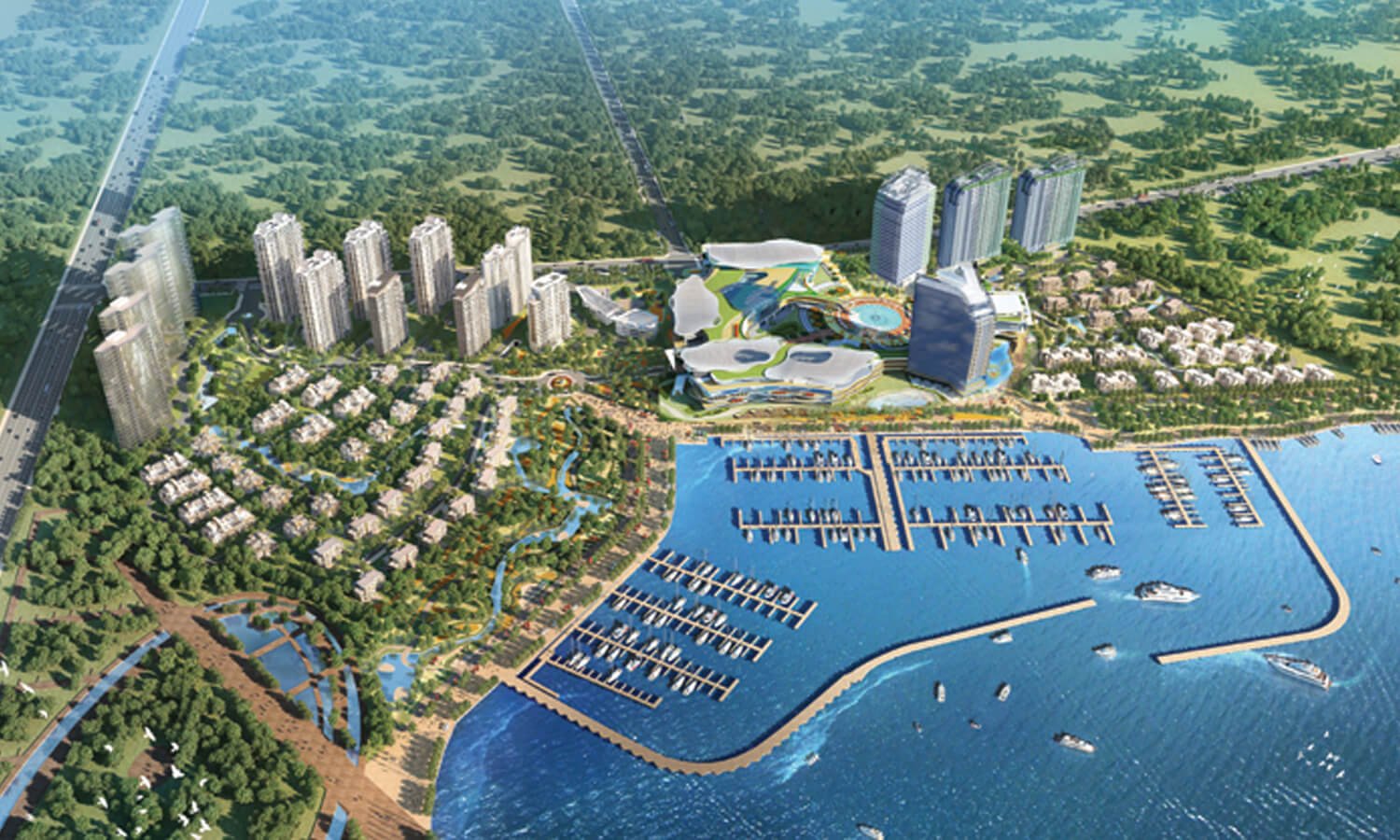
A new partnership between Marina Projects and Mott MacDonald Hong Kong offering a seamless collaboration between Marina Projects consultancy services and Mott’s MacDonald’s maritime / coastal engineering expertise.
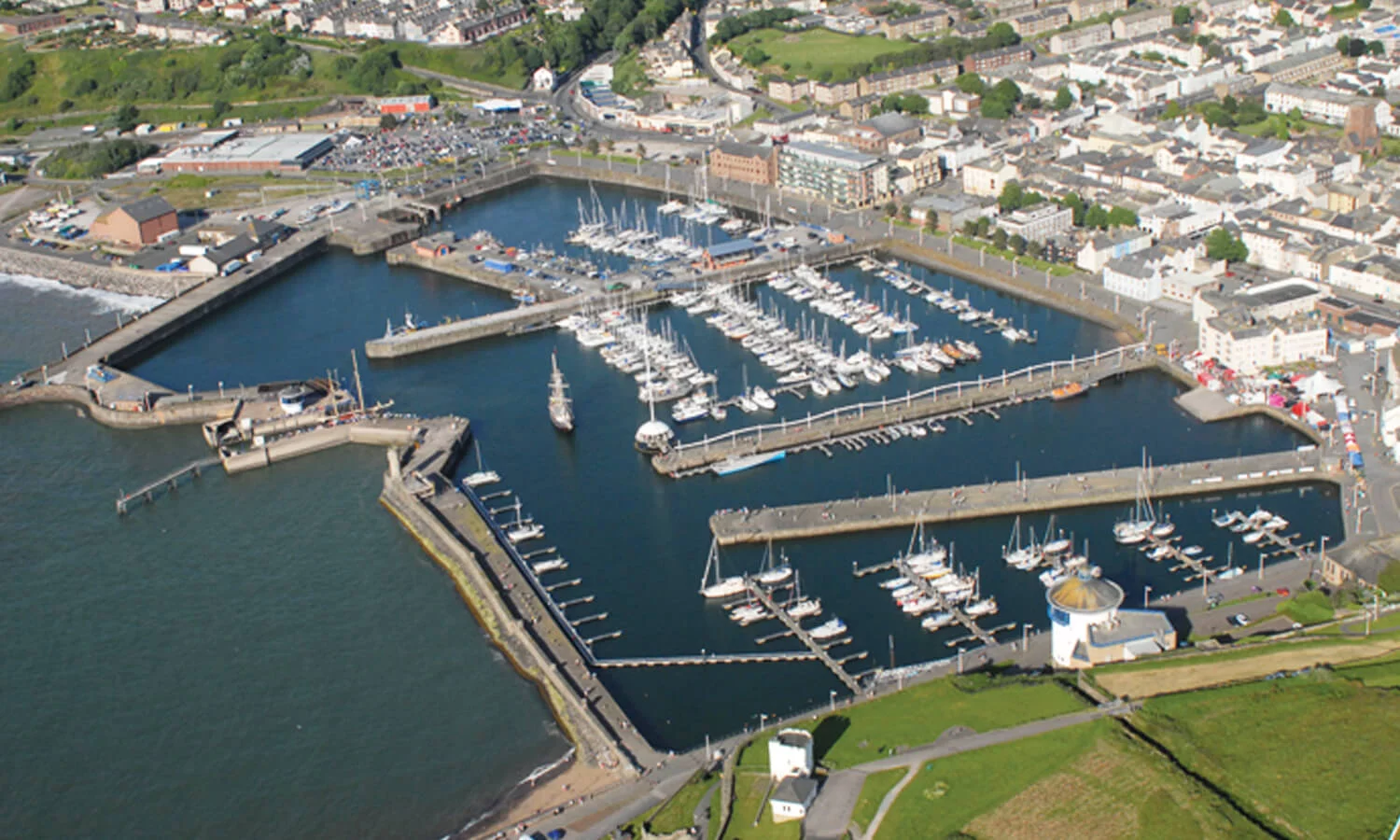
Whitehaven Marina is the most comprehensive marina on the northwest coast of England, originally with 285 fully serviced berths and access via a sea lock at almost all states of the tide.

A high-level review of the breakwater options for the Medina and the resultant benefits and opportunities.
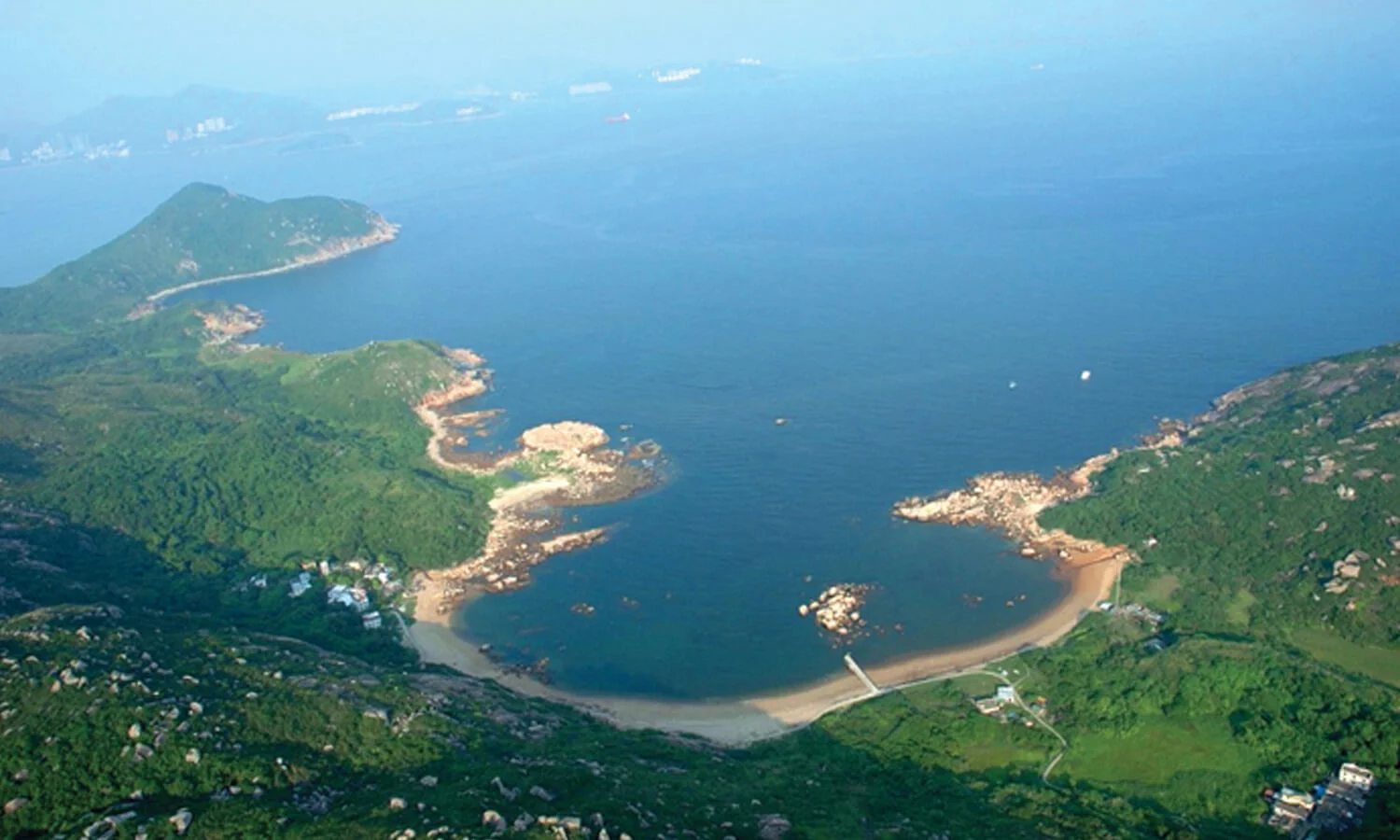
A comprehensive waterfront scheme located on Lamma Island within the South Eastern approaches to Hong Kong, comprising a mix of residential, retail, hotel and an extensive marina offering.
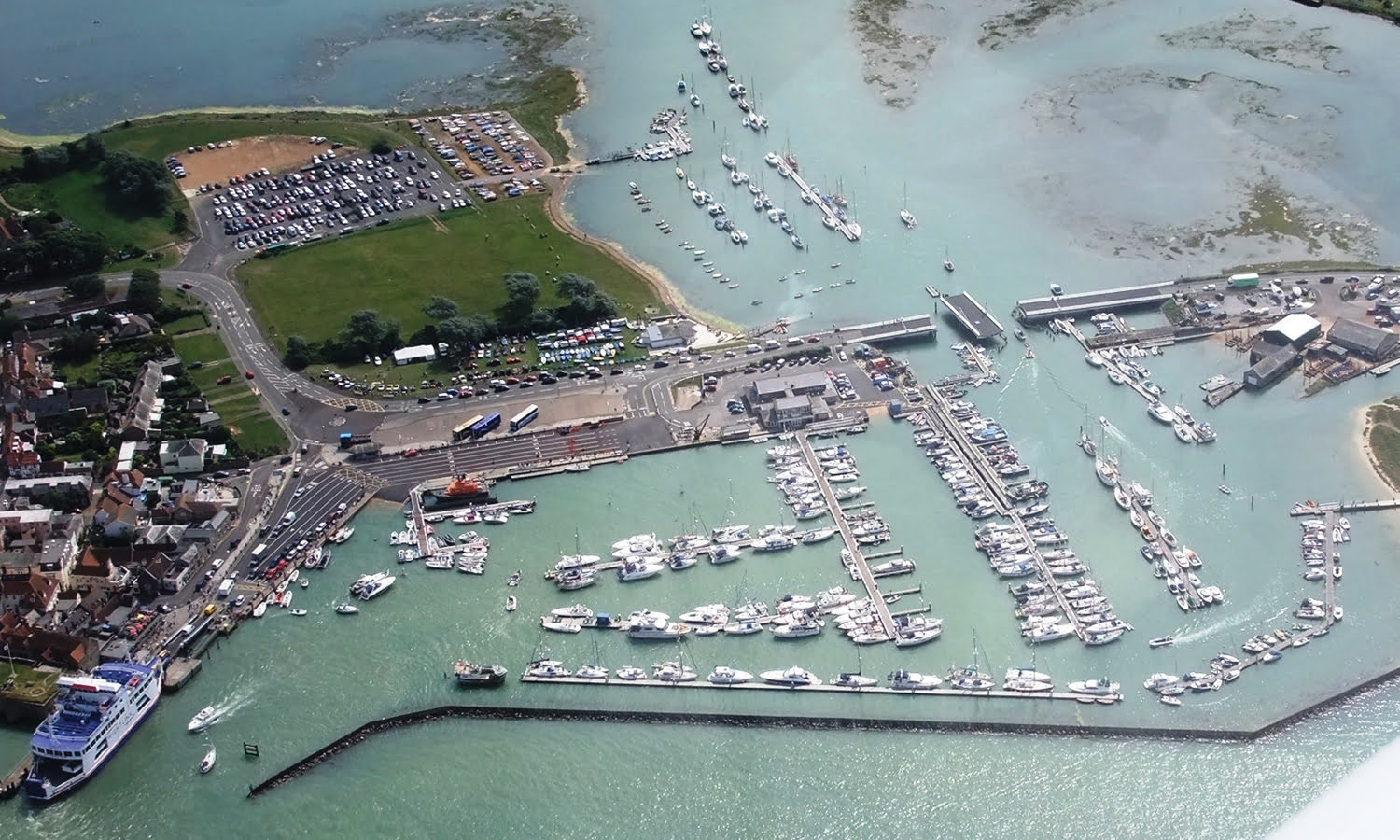
What started as a Feasibility study carried out by Marina Projects developed into a Masterplanning and delivery project to overhaul the facilities at Yarmouth Harbour.
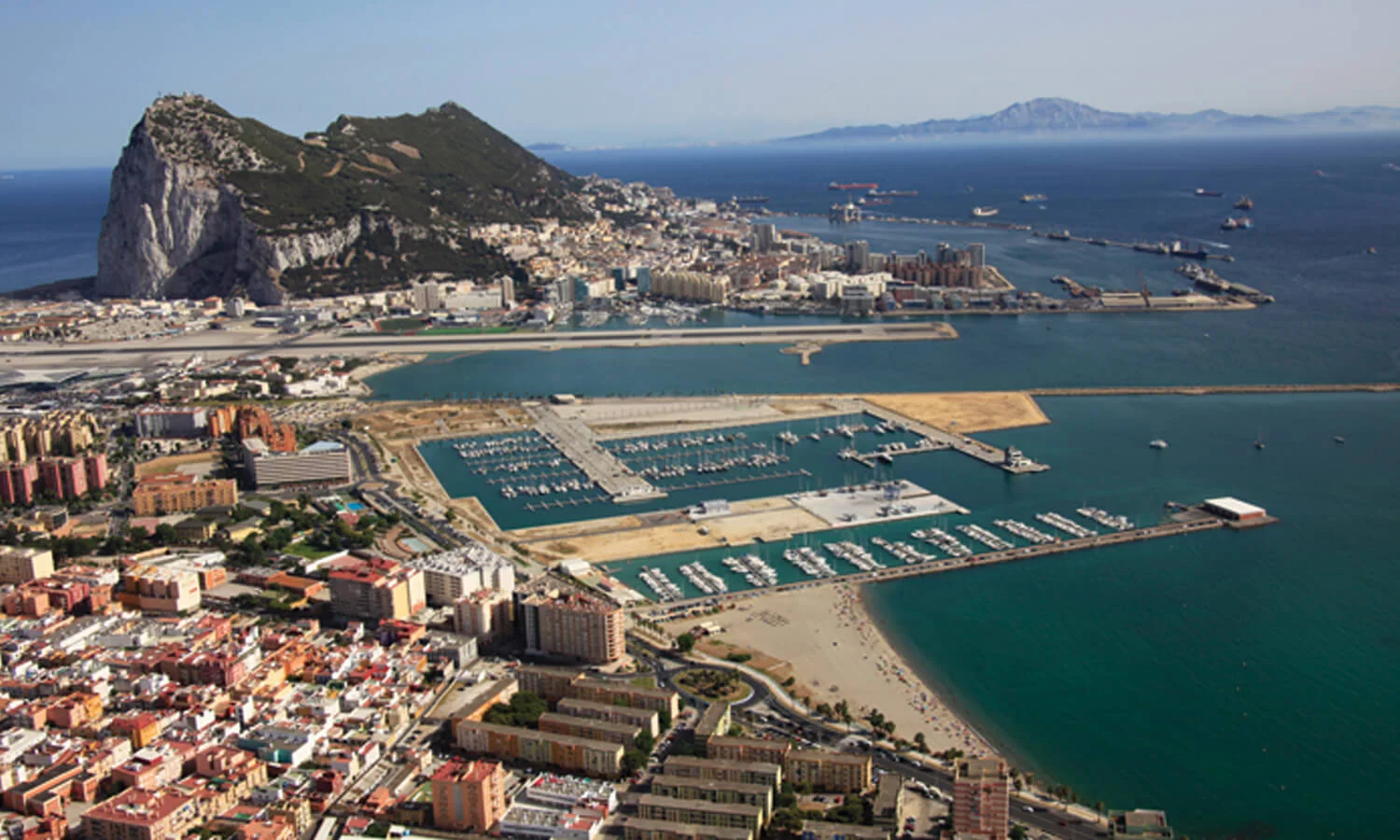
Alcaidesa Marina, dubbed the marina “At the Gateway to the Mediterranean” is located in La Linea, Southern Spain, just north of the Gibraltarian border.

The global authority in superyachting
- NEWSLETTERS
- Yachts Home
- The Superyacht Directory
- Yacht Reports
- Brokerage News
- The largest yachts in the world
- The Register
- Yacht Advice
Yacht Design
- 12m to 24m yachts
- Monaco Yacht Show
- Builder Directory
- Designer Directory
- Interior Design Directory
- Naval Architect Directory
- Yachts for sale home
- Motor yachts
- Sailing yachts
- Explorer yachts
- Classic yachts
- Sale Broker Directory
- Charter Home
- Yachts for Charter
- Charter Destinations
- Charter Broker Directory
- Destinations Home
- Mediterranean
- South Pacific
- Rest of the World
- Boat Life Home
- Owners' Experiences
- Interiors Suppliers
- Owners' Club
- Captains' Club
- BOAT Showcase
- Boat Presents
- Events Home
- World Superyacht Awards
- Superyacht Design Festival
- Design and Innovation Awards
- Young Designer of the Year Award
- Artistry and Craft Awards
- Explorer Yachts Summit
- Ocean Talks
- The Ocean Awards
- BOAT Connect
- Between the bays
- Golf Invitational
- Boat Pro Home
- Pricing Plan
- Superyacht Insight
- Product Features
- Premium Content
- Testimonials
- Global Order Book
- Tenders & Equipment
Keep up-to-date with the latest design trends with our design news , get the inside story on how the most iconic luxury superyachts were designed and find out more about the world’s best superyacht designers
In conversation with...
More on superyacht design & interiors, iconic yachts, charter a masterpiece, latest yacht news, from our partners, sponsored listings.
Designing Your Yacht | Principles of Form and Function

- how it works
- concierge search

Russia establishes special site to fabricate fuel for China’s CFR-600
!{Model.Description}
A special production site to fabricate fuel for China’s CFR-600 fast reactor under construction has been established at Russia’s Mashinostroitelny Zavod (MSZ - Machine-Building Plant) in Elektrostal (Moscow region), part of Rosatom’s TVEL Fuel Company.
As part of the project, MSZ had upgraded existing facilities fo the production of fuel for fast reactors, TVEL said on 3 March. Unique equipment has been created and installed, and dummy CFR-600 fuel assemblies have already been manufactured for testing.
The new production site was set up to service an export contract between TVEL and the Chinese company CNLY (part of China National Nuclear Corporation - CNNC) for the supply of uranium fuel for CFR-600 reactors. Construction of the first CFR-600 unit started in Xiapu County, in China's Fujian province in late 2017 followed by the second unit in December 2020. The contract is for the start-up fuel load, as well as refuelling for the first seven years. The start of deliveries is scheduled for 2023.
“The Russian nuclear industry has a unique 40 years of experience in operating fast reactors, as well as in the production of fuel for such facilities,” said TVEL President Natalya Nikipelova. “The Fuel Division of Rosatom is fulfilling its obligations within the framework of Russian-Chinese cooperation in the development of fast reactor technologies. These are unique projects when foreign design fuel is produced in Russia. Since 2010, the first Chinese fast neutron reactor CEFR has been operating on fuel manufactured at the Machine-Building Plant, and for the supply of CFR-600 fuel, a team of specialists from MSZ and TVEL has successfully completed a complex high-tech project to modernise production,” she explained.
A special feature of the new section is its versatility: this equipment will be used to produce fuel intended for both the Chinese CFR-600 and CEFR reactors and the Russian BN-600 reactor of the Beloyarsk NPP. In the near future, the production of standard products for the BN-600 will begin.
The contract for the supply of fuel for the CFR-600 was signed in December 2018 as part of a governmental agreement between Russia and China on cooperation in the construction and operation of a demonstration fast neutron reactor in China. This is part of a wider comprehensive programme of cooperation in the nuclear energy sector over the coming decades. This includes serial construction of the latest Russian NPP power units with generation 3+ VVER-1200 reactors at two sites in China (Tianwan and Xudabao NPPs). A package of intergovernmental documents and framework contracts for these projects was signed in 2018 during a meeting between Russian President Vladimir Putin and Chinese President Xi Jinping.
- Terms and conditions
- Privacy Policy
- Newsletter sign up
- Digital Edition
- Editorial Standards

- History of cooperation
- Areas of cooperation
- Procurement policy
- Useful links
- Becoming a supplier
- Procurement
- Rosatom newsletter
© 2008–2024Valtiollinen Rosatom-ydinvoimakonserni

- Rosatom Global presence
- Rosatom in region
- For suppliers
- Preventing corruption
- Press centre
Rosatom Starts Life Tests of Third-Generation VVER-440 Nuclear Fuel
- 16 June, 2020 / 13:00
This site uses cookies. By continuing your navigation, you accept the use of cookies. For more information, or to manage or to change the cookies parameters on your computer, read our Cookies Policy. Learn more

IMAGES
VIDEO
COMMENTS
Future-Proofing. Considering the major investment required to design and build a superyacht marina today, no owner wants to see it be out-of-date tomorrow. So, part of the marina designer's task is to "future-proof" the project against changing trends in the large-yacht market. "Nobody's got the crystal ball of that," Phlegar says.
The marina will be home to a brand new yacht club and beach club as well as a dedicated crew lounge. ... As well as its clever design the marina also offers 24-hour security, state-of-the-art electricity and water service pedestals, a pump out station, Wi-Fi and a petrol and diesel gas station. There is also a new restaurant and café on site.
First and foremost, the type of marina one must design should adhere to the space available for development. You should focus on creating ample space for proper arrangements of slips to make the most room for onboarding boat owners. Apart from slips, the area available for development is also dependent on its location.
People want to have a destination at the marina instead of just a place to dock their boats. When creating a marina to last for years, consider this demographic and other future-thinking design trends. 1. Incorporating Shoreline Amenities and Attractions. Marina users today don't spend all their time on the water.
The marina was designed by mariners and is complete with 450 berths and contains the world's largest yacht berth at 250m. 95,000m2 of residential space is also available in the immersive community. The marina's design is simple and contains a series of walkways that form the basis of the berths. The expansive vista is a picture of wealth ...
A plied to marina layout. These dimensions are typical assumption is to add 0.6 m (2.0 ft) to the based on favorable site conditions, with ade design beam to account for fenders and allow quate fairway widths, and on the use of a float some space to get in and out of the slip. While ing dock system.
Australian standard for design of marinas for 'small' leisure craft <50m. British standards for design of ports for large commercial vessels. (draft PIANC guidance for design of super yacht marinas, July 2009) Developed my knowledge to fill these gaps, working closely with a marina operator and through discussions with pontoon manufacturers ...
Emerging Trends for Adaptive and Resilient Marina Design. While contemporary vessels lack the open hatch grates of 19th century sailing ships, boaters still know what it means to "batten down the hatches" in preparation for a storm. Eliminating or minimizing vulnerabilities before rough conditions hit is also becoming an essential ...
Marinas, yacht harbour and berthing design, manufacturing, storage and shipping services. +44 (0)1489 579977 Contact Locations Worldwide ... The company's experienced design team, coupled with its state-of-the-art computerised marina design systems, is able to produce the best possible layout, facilities and services to suit the particular ...
The design of marina requires careful attention to design parameters to maximize benefit, provide functional use and ensure safe berthing for yachts [Dalibor & Prsić, 2005]. In order to determine ...
Preferred fairway width is. 1.75L. Tominimise anoeuvring accidents, it has been found that minimum fairway widths between rows of berths in well protected waters should bethe greater of 20 m orL + 2 m (where L is length oflongest boat in marina). The preferred width is 1.75L. 4.4Berthing Facilities.
The right materials have always been a key fundamental of marina design, which will not change anytime soon. Dock manufacturers have long been trending toward PVC and aluminum systems along with many rust-proof options, and that's likely to continue. Composite materials will continue to lead the market as a key fundamental of marina design.
Yachts Parameters for Marina Design Dalibor Carević, C.E Prof.dr.sc.Marko Pršić, C.E. University of Zagreb, Faculty of Civil Engineering, Kačićeva 26, 10000 Zagreb, Croatia, [email protected] Abstract The basic dimensions of power and sailing yachts are presented, as well as basic dimensions for two type of berths: Mediterranean ones and finger ...
Enter, design technology. Digital design tools provide the ability to create, model, and modify marina renderings. This helps marina management, boat owners and club members visualize project concepts, alternative layouts, building materials, color palettes, landscaping, trails and connectors, accessories, green spaces, recreation areas, and ...
The final design of a marina should be a compromise of marina capacity, services, and access, while minimizing environmental impacts, dredging requirements, protective structures, and other site development costs. ... Locate fueling stations in areas protected from waves and easily accessible by boat without entering or passing through the main ...
There are two fundamental questions that we ask at the start of any new yacht and superyacht marina project: ... The marina design development follows a well established process which involves a series of feedback and review loops. As facts are found, we question our assumptions, revise our marina designs and re-run financial models. And we ...
Here, you'll find a selection of our projects, demonstrating our experience and the broad range of consultancy services provided by Marina Projects. For more information on any of the projects and services we offer, please call +44 (0)23 9252 6688 or use the contact us button.
BAZ Yacht Design reveals 50m superyacht concept with underwater observatory. Atlante Classic 35. Hull turned on Atlante Yachts' first 35m explorer yacht. Unexpected end of JSON input. Unexpected end of JSON input. Our in depth features reveal the story behind the latest luxury yacht designs and interiors with exclusive insight from superyacht ...
The second principle of yacht design is function. This refers to the yacht's ability to meet its owner's and passengers' needs. A well-designed yacht should be highly functional and give all onboard a comfortable and enjoyable experience. Several key elements are considered when designing a yacht's function.
We undertake in house; the detailed design, engineering, fabrication and installation of aluminium windows, doors and curtain walls. As a group today, we have a total of more than 100 technical staff and over 550 workers working in collaboration with the high-end software and machinery. Since 2016, our BIM trained group (consisting of 15 ...
Второй, на 200 мест, строится по адресу: Шереметьевская улица, владение 39 на месте снесенного пятиэтажного дома. А на улице Новосущевской, владение 37 откроется детский сад поменьше - на 95 ...
These are unique projects when foreign design fuel is produced in Russia. Since 2010, the first Chinese fast neutron reactor CEFR has been operating on fuel manufactured at the Machine-Building Plant, and for the supply of CFR-600 fuel, a team of specialists from MSZ and TVEL has successfully completed a complex high-tech project to modernise ...
Dukovany NPP with 2040 MWe of installed capacity has four power units powered by VVER-440 reactors which were commissioned one by one in 1985-1987. The plant generates about 13 billion kWh of electricity annually covering approximately 20% of power consumption in the Czech Republic. Together with Temelin NPP (two units with VVER-1000), ČEZ ...